The post A Powder Highway Ski Trip Through Canada appeared first on The Expeditioner Travel Site.
]]>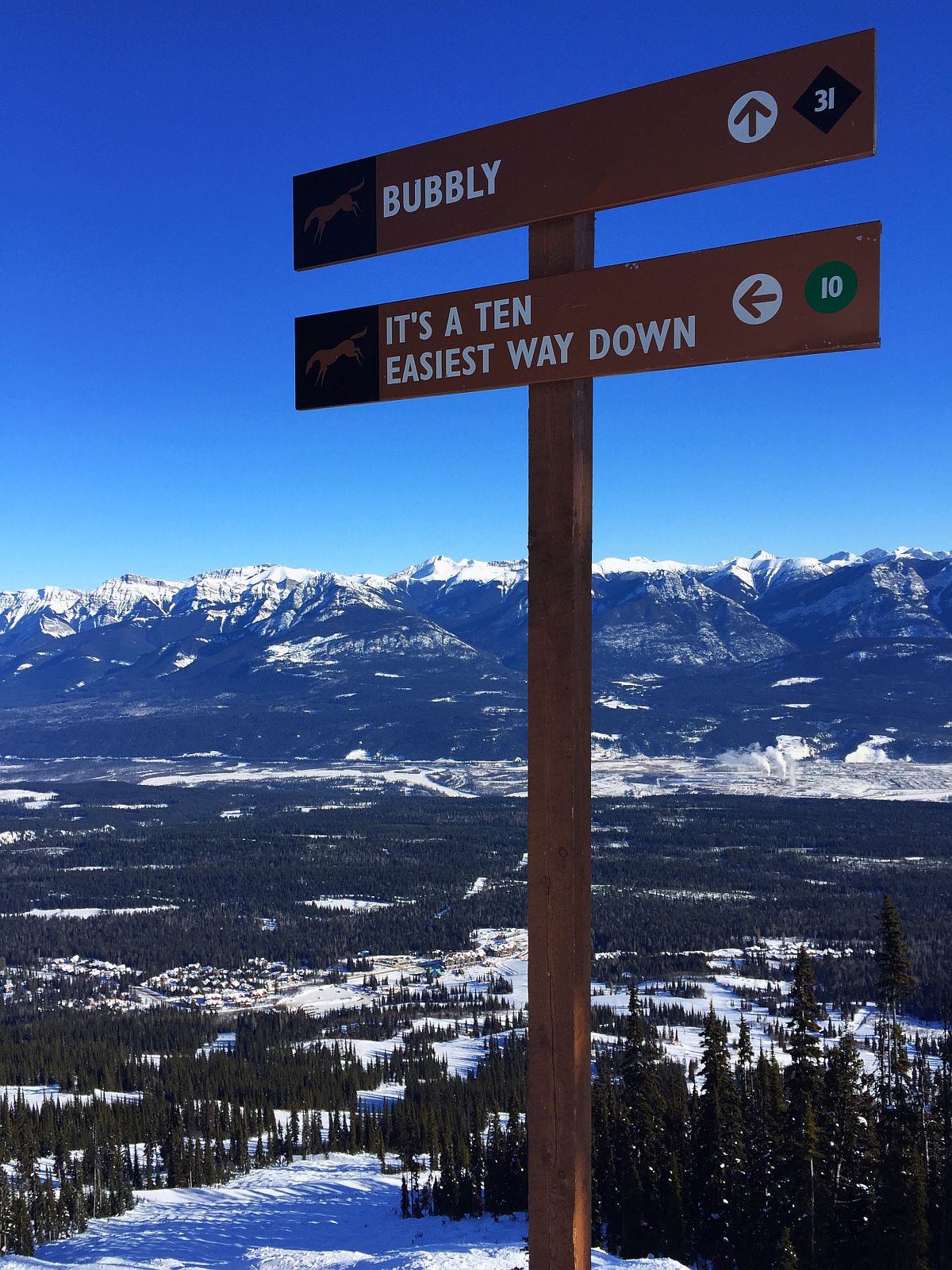
About halfway into the 18-minute, high-speed gondola ride up the mountain, my brother-in-law turned to me. He had a concerned look on his face. Beyond us in the distance we could see the steep vertical drops along the south ridge of the forebodingly titled Terminator Peak, the 7,900-foot mountain that caps the southern portion of Kicking Horse Mountain Resort.
Concerned is not the look you want to see on your skiing partner, especially when your skiing partner happens to have a good 20 years more of experience than you and is arguably at peak condition. Oh, and did I mention, had successfully trained at and passed the Police Academy?
“Just don’t tell my sister,” was the best I could come up with.
We were on the first lift up marking the beginning of a road trip through Canada’s famed Powder Highway. Despite the name, the Powder Highway isn’t a highway at all, but the unofficial name given to the region of southern British Columbia located on and between the Rocky Mountains and Columbia Mountains that is home to roughly 30 ski-related destinations ranging from traditional Nordic-style mountains, heli- and cat-skiing operators, and backcountry lodges.
To get there, most people fly like we did, to the oil-rich plains of Calgary, Alberta, rent a four-wheel-drive vehicle, then drive three hours due west through the Rocky Mountains on what is probably one of the most scenic stretches of road in the world through Banff National Park (itself home to several of the most famous ski resorts in Canada), where you are quickly enveloped by snow-covered peaks on either side of you. It’s here you realize early on you’re entering ski country.
Our plan was to take a circuitous route starting from the north at Kicking Horse Mountain Resort in the Purcell Mountains, head due south along Highway 95 and ski Kimberley Alpine Resort, then turn due east and back into the Rocky Mountains and take on Fernie Alpine Resort, before returning north to Calgary to catch our flight a week later. This would allow us to visit three of some of the most well-known ski resorts in the region, and to get a taste of the different snow conditions each mountain offers given their different terrains and locations (there was a lot of talk of snow composition during this trip, so be prepared).
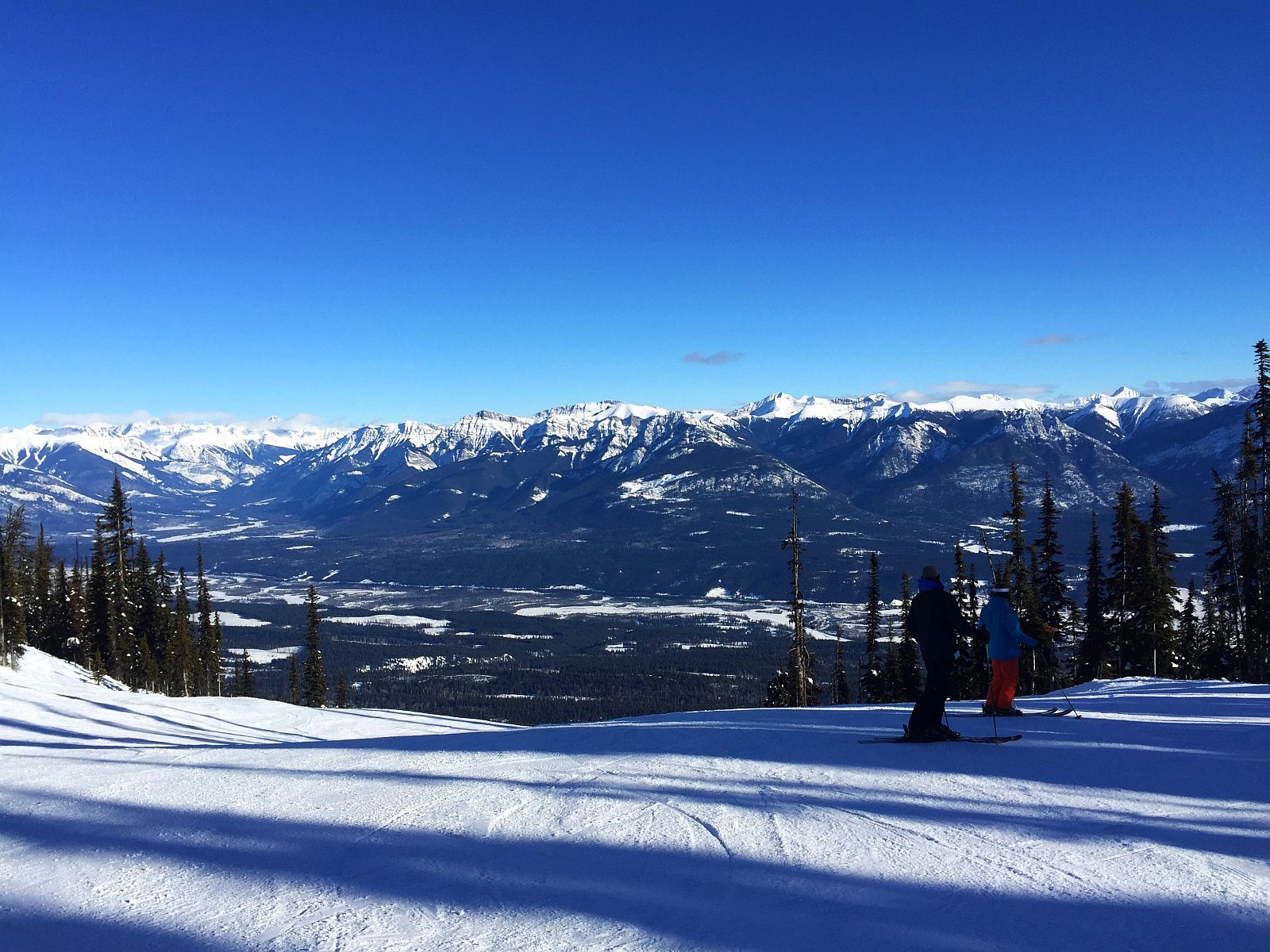
Kicking Horse
Kicking Horse, located in the small mining town of Golden, is what is truly known as a “Skier’s Mountain.” Featuring the fourth-highest vertical drop in North America and over 2,800 acres of skiable terrain, Kicking Horse is one of those mountains that remind you of the footage you see in hardcore skiing movies you watch back when you’re safely on flat ground.
Having only started up skiing again the winter before after a decade-long break, the tentacles of trails plunging precipitously downward underneath our gondola had me racking my brain as to what level of skier I had told our guide that I was.
“I did mention on the email that I probably fall closer to the novice/intermediate level than advanced, right?” I asked Emile, a former ski instructor from Whistler and recent transplant to Golden.
“Don’t worry, we’ll stick to the beginner and intermediate trails,” he responded.
A memory popped in my head of someone telling me how the trails out West were graded on a curve, meaning many of those black runs back on our icy mountains on the East Coast were given such fuzzy labels as “Beaver Tail” and “Jelly Bean” here.
After arriving to the peak and making our way across the gently sloping trail atop CPR ridge (yes, really), we in turn dove down and into the nearly empty Crystal Bowl, gliding effortlessly through the “champagne powder” layer that had accumulated the night before, our skis naturally catching each turn and responding to each motion.
Did that just really happen? Powder snow? Responsive turns? Open glens bereft of hordes of skiers? As any East Coast skier can tell you, the initial sensation you feel on a mountain out West after years of carving through narrow, icy chutes, elbow-to-elbow with other skiers, is akin to the joy a bird must feel when let loose from their cage after years in captivity.
It was a classic bluebird day, and we spent the morning making trips up and down the mountain, an amazing feat when we realized how much skiing one can do when there are no lines at the lifts. Given that the distance from top to bottom is roughly 4,000 feet, it’s not unheard of to get in 40,000 feet of skiing on a comfortable day, a truly amazing amount of distance.
Of course, that would likely mean skipping lunch at the famed Eagle’s Eye Restaurant, which we weren’t prepared to do. The mountaintop eatery at the top of the main gondola offers skiers the opportunity to lunch on Truffle Fries or dig into a Strip Loin Steak, featuring Alberta Angus Beef served with Garlic Butter and Onion Jam, all while gazing several thousand feet out across the mountain vista. For those looking for one of the more unique lodging experiences, the restaurant is also home to two B&B-style rooms on the second floor with sweeping views of the resort.
Late in the afternoon after another lengthy run down the mountain, my brother-in-law turned to me as we came to a stop at the base. “This is easily the best skiing I’ve ever done in my life!” The irony of the statement is that the local staff kept apologizing to us for the unseasonable lack of recent snowfall the past week. Believe me, no apologies were necessary.
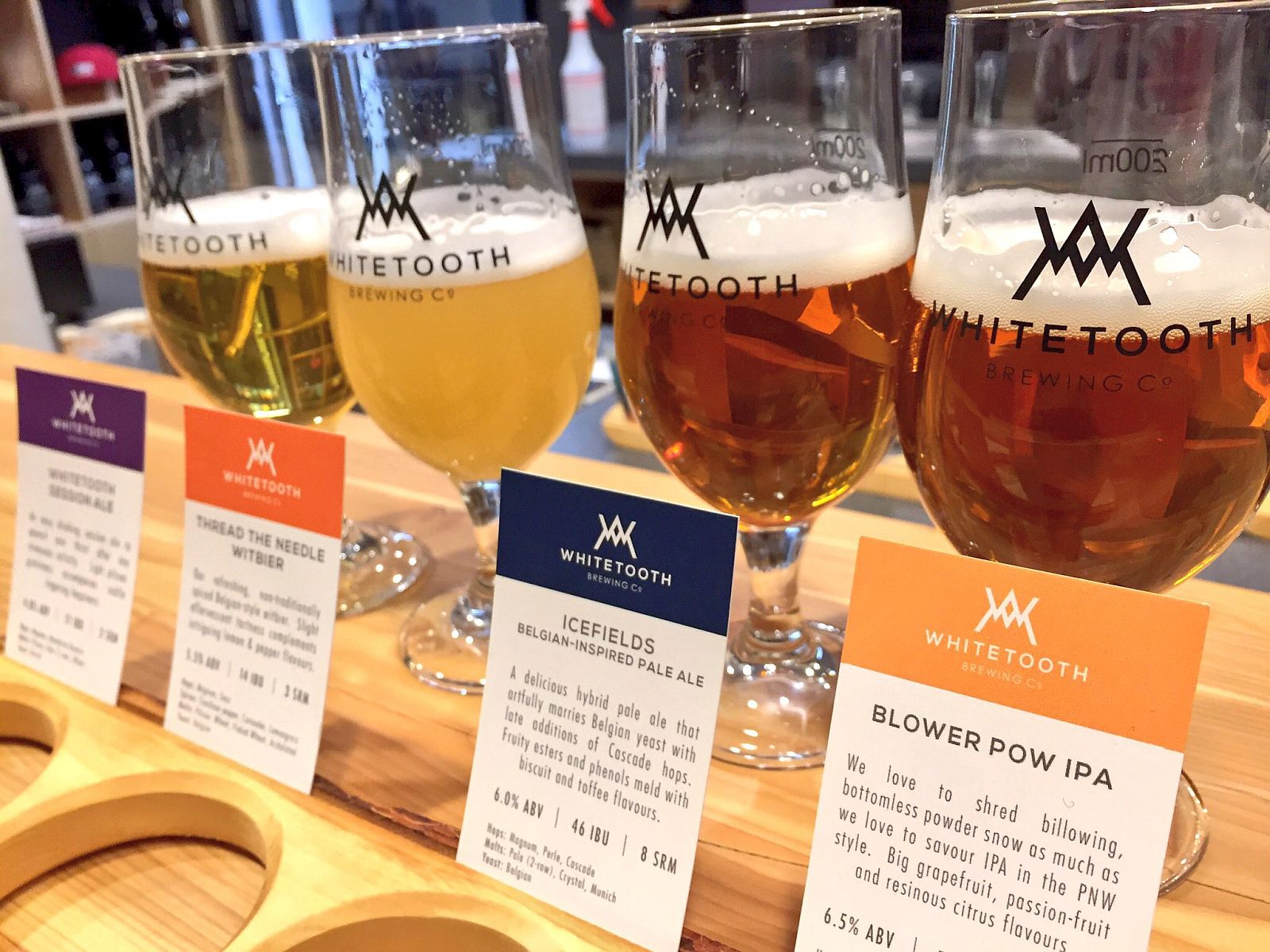
After a quadriceps-burning afternoon catching as many runs as we could before the low-rising winter sun began to set, we cleaned up back at the base lodge, then headed into town to explore Golden’s après-ski offerings.
Our first stop was the newly opened Whitetooth Brewing Company. Opened by home brewer Kent Donaldson, the brewery is part of a recent uptick in the number of breweries in the province as a result of the elimination of a law that once prohibited such breweries form serving beer to the public. Whitetooth specializes in so-called “West Coast” and Belgian-style beers, including the Thread the Needle Witbier, featuring lemon and pepper flavors, and the Icefields, a Belgian-inspired Pale Ale with a toffee aftertaste. The best option is the four-beer flight served with collectible cards that break down each beer’s composition (including names of each beer’s hop, malt and yeast).
After downing our flights, we decided on dinner at The Wolf’s Den. With its woodsy lodge interior and bonfires burning out front, you could almost imagine you had stumbled into a restaurant deep in mountain country, which, technically we were. In keeping with that theme, I chose the Elk Burger because, well, when else am I going to get the chance to eat one? The 7-ounce elk patty was served with peppercorn sauce and topped with Swiss cheese and whiskey bacon jam. I’m not much of a burger guy normally, but the flavor I tasted after biting into the game meat had me wishing there were more New York restaurants looking to expand their menu offerings.
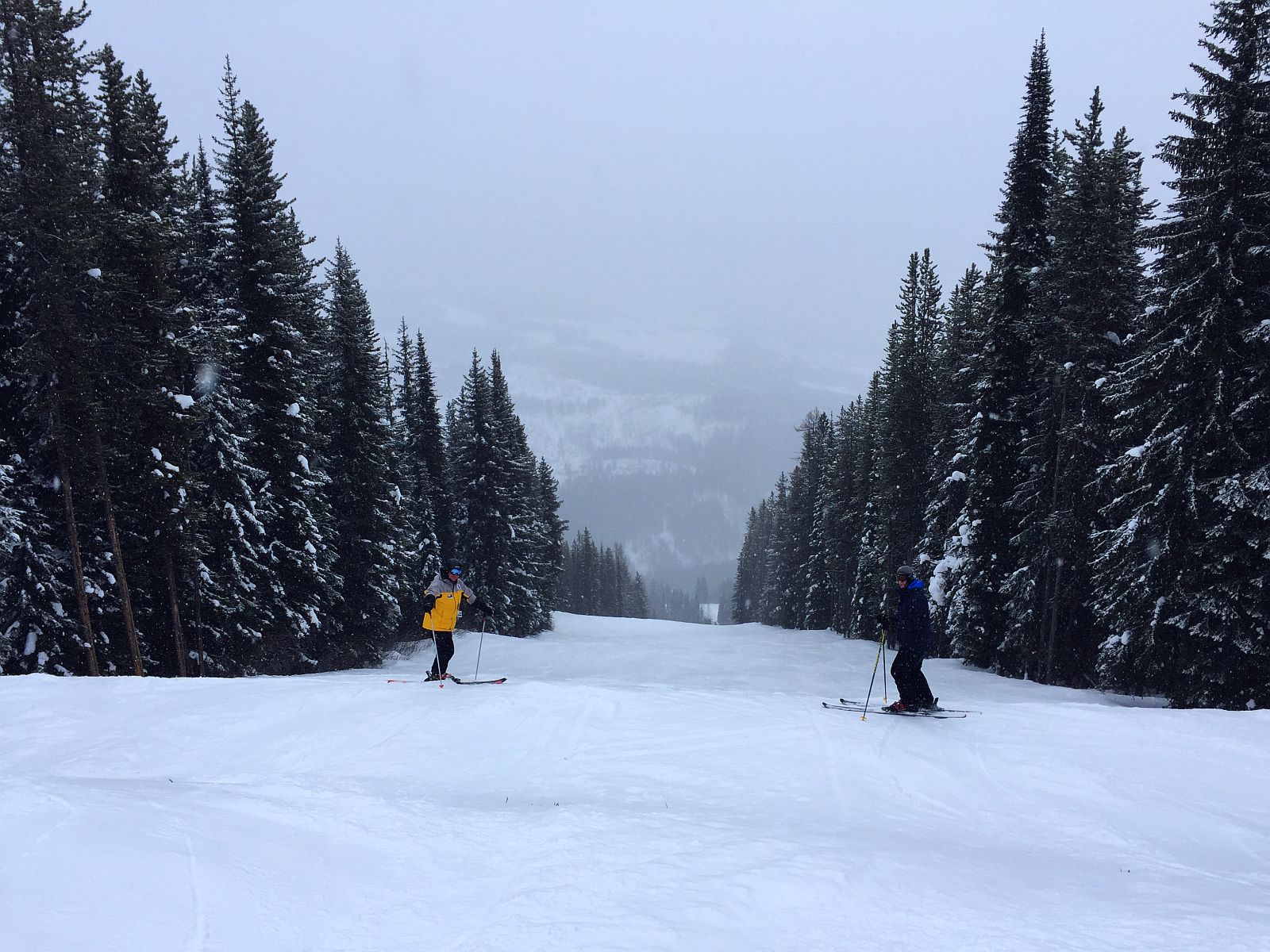
Kimberley
For our second stop, we turned southward and made our way through the long valley between the steep Purcell and Rocky Mountains. We passed several pristine mountain lakes nestled along the highway, their surfaces shining bright blue in reflection of the sky. Along the way we also drove past Radium and Fairmont Hot Springs, publicly accessible natural hot springs bubbling up with sulfuric-tinged water pushed to the surface as a result of geologic activity that has its roots in the very mountains that now framed the horizon out our car’s windows.
Late in the afternoon we arrived at Kimberley Mountain Resort and settled in to the Trickle Creek Lodge where we would be staying for the evening. With the stated goal of stuffing ourselves with as many calories as possible to make up for the last 2 ½ days of downhill exertion, we met up with local Jesse Ferguson who agreed to show us a bit of what this former mining town had to offer.

First we stopped off for provisions at Centex Market. Run by Jill Bentley, this former gas station had been in operation for over 30 years before being recently converted by her into a thriving organic grocery store teeming with products that could rival any Whole Foods. We stocked up on breakfast burritos and Stoke Juices, her signature line of bottled juices prepared fresh every morning on site by cold pressing between 3 – 5 pounds of fruits and vegetable per bottle.
After parking near the center of town, we made our way to downtown Kimberley where rows of Bavarian-themed storefronts and buildings line the carless thoroughfares. Finding a place to eat or drink in Kimberley is not difficult given the fact that it’s home to the most number of restaurants per capita than anywhere else in Canada. We decided on pre-dinner beers at the wood shed-themed bar appropriately named The Shed, where you can try pints from local brewer Over Times Beer Works among groups of local “lifties” (those who work at the nearby resort) and racks of tools hanging from the walls.
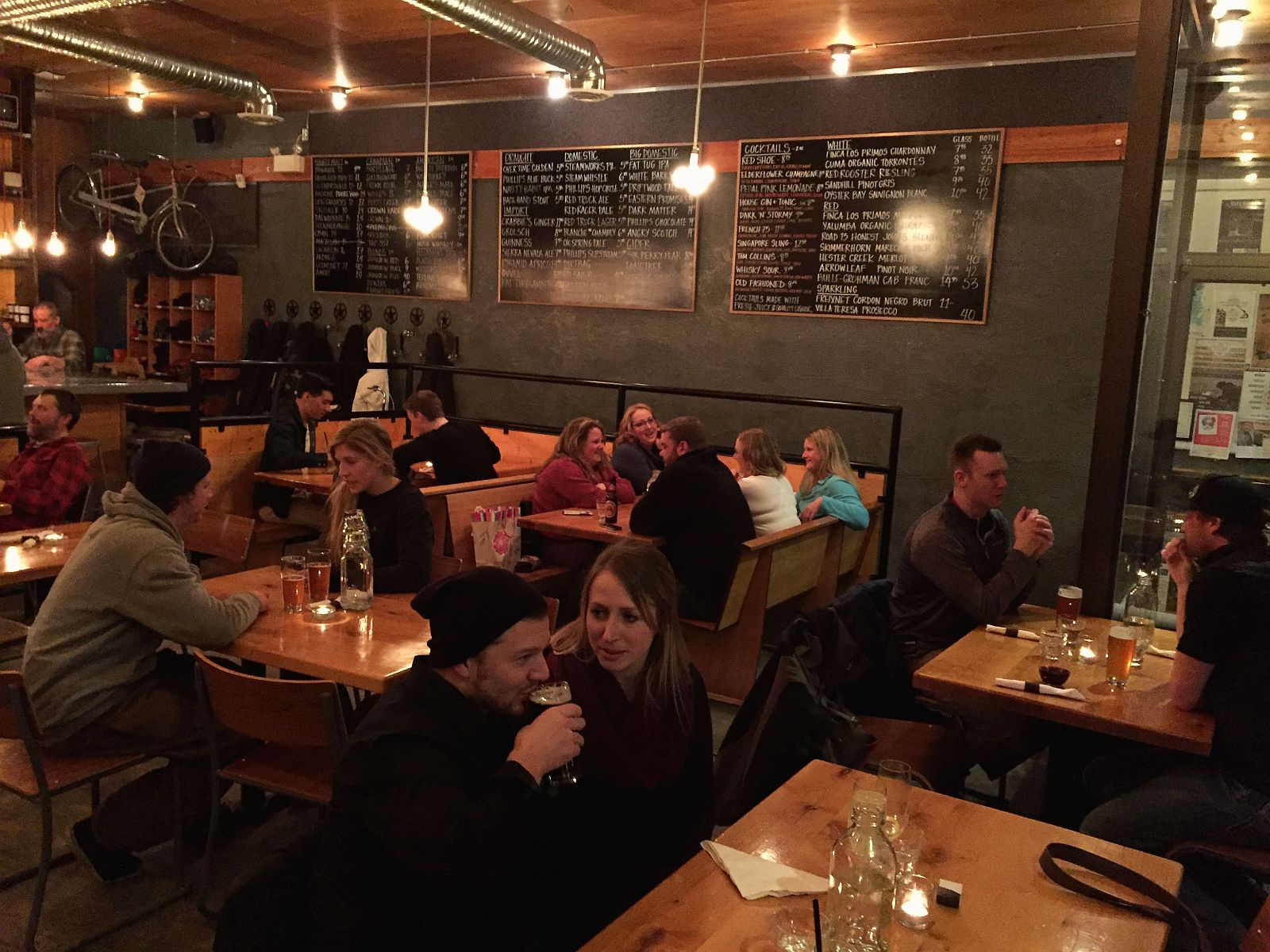
For dinner we walked around the corner to Pedal & Tap, one of the highest rated restaurants in the city and which decided on a bike theme for its decor (they’re big on themes here). We decided on their famous Mucky Fries for our starter — hand-cut fries mixed with mozzarella, aged cheddar, maple bacon and green onions, and topped with a chipotle sauce — and the Wild Boar Meatloaf Medallions (they come wrapped in bacon and served with a cherry BBQ sauce) and the Vegan Thunder (a hearty Indian-influenced soup) for dinner.
By the next morning a wintry cold front had moved in, and the trails were covered with a fresh layer of powder snow greeting us as we headed out to explore the mountain’s 75 runs spread out across four faces — Northstar Mountain, Tamarack Ridge, Vimy Ridge and Black Forest. We were joined by Ron Concoran who, having sold his business years ago, now calls Kimberley home year-round and lives in a mountainside chalet-style home just a 30-second ski run away from the main chair lift — not a bad way to enjoy your winters.
We began with a few runs on the wide-open trails that make up the accessible Northern Mountain. We then cut across the ridgeline to the back end of the resort to Black Forest for what was to be some of the best skiing I’d ever experienced in my life.
Spread out across two dozen runs, Black Forest was eerily quiet and bereft of the other skiers who tended to bunch up at the front of the mountain, which meant we were given free range to loop up and down the mountain the entire afternoon, varying our runs between the several black diamond chutes carving their way through the snow-covered spruces.
The climate here is drier and less windy than most mountains, resulting in a fine, powdery snow that provides one of the best skiing conditions in the world. Skis feel like they float on the snow’s surface as you navigate through it, and it provides an amazing amount of responsiveness with little exertion, a plus for long days skiing.
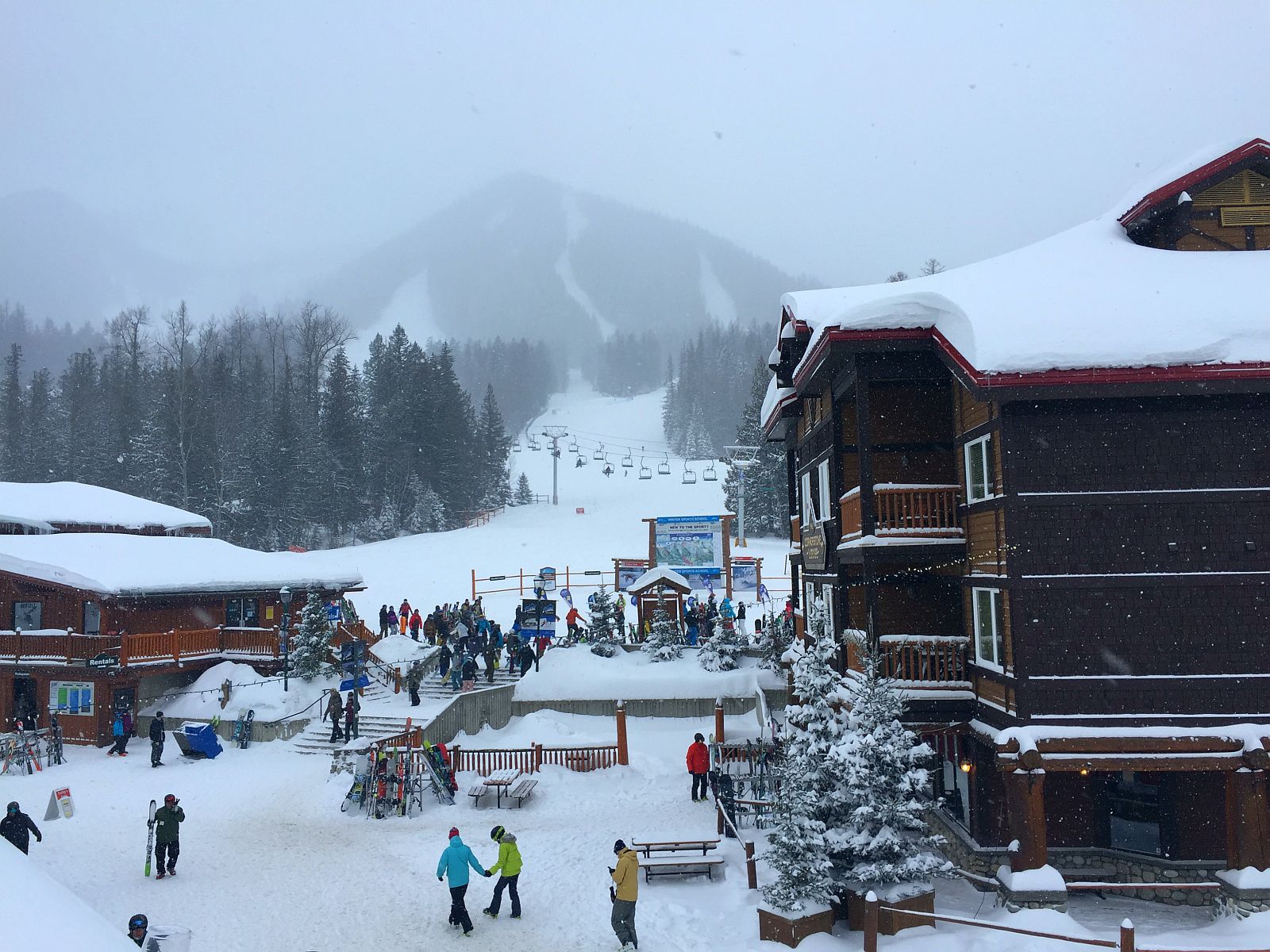
Fernie
After a quick lunch at Stemwinder Grill in the resort village, we packed up and drove 1 ½ hours due east through the Rockies to the range’s eastern facing side to the famed Fernie Alpine Resort.
The resort has long been regarded as one of the favorite mountains in all of the Powder Highway for a few basic reasons. First, it’s huge. The resort features five main bowls and 142 runs spread out over 2,500 acres. Second, the resort, to put it bluntly, gets pounded with snow every year, averaging 30 feet (360 inches!) per year. Lastly, it’s just plain a lot of fun. Dating back to its opening in 1973, the resort adopted the party-friendly atmosphere like many ski towns of that era, particularly highlighted by the annual Griz Days Winter Festival that honors a fictional mountain man (Griz) that is said to call the area home (the festival itself revolves around live music, food, entertainment and other related winter revelry).
With a near-blizzard setting in that night, we woke up the next morning to over a foot of freshly fallen, heavy and wet powder that carpeted the entire resort — a typical variety of snow given the moisture that collects at the front of the mountain range here.
Starting off at the far northern end at Cedar Bowl, I was not prepared for it was like to experience true powder. For an East Coast skier like myself, I was a bit unprepared on how different it would be. Used to digging in my skis and forcing directional changes as needed, I quickly planted myself face first into the snow on my first turn.
“Here’s a tip: Lean forward and let the skis float above the snow,” our guide for the day, Christina, suggested as I awkwardly picked myself up with my poles.
Though not intuitive, her advice to lean forward helped, and I slowly but surely got my ski legs back as we headed up and down each of the rest of the bowls, including the massive Lizard Bowl, the resort’s largest, as well as Currie Bowl, Timber Bowl and Siberia Bowl. By the time we made it to Siberia Bowl on the southern edge and cruised the length of the resort’s longest trail, my legs were burning and I was eyeing an excuse to break for the day and get my body in a warm tub of water as soon as possible.
Lucky for us, we were staying at the Lizard Creek Lodge, located at the base of the mountain and a stone’s throw away from one of the three base-level lifts. After a much-needed hot tub break (Fernie is where they filmed Hot Tub Time Machine after all) we met up with a group for dinner at Cirque Restaurant. With its soaring ceiling lined with exposed wood, four-sided fireplace and magnificent views of the mountain just outside the windows, it felt like a mix of Vegas mixed with the Rockies. Featuring such options as Duck Ragu Pappardelle, Sea Bass and Prawn Paupiette, and Elk Ribeye, you can rest assured you’re going to eat well in your effort to replenish the calories burned carving through thick powder during the day.

Just off the lobby of the restaurant is one of the more unique bars in the resort, the Ice Bar. We were handed fur-lined Helly Hansen parkas and led through a thick, metal door that opened up into a temperature-controlled ice-covered room complete with an carved ice bar and frozen shelves featuring dozens of different vodkas for tasting. With little knowledge in the world of Vodka, the hostess/bartender that escorted us in suggested a few bottles to try, including my favorite, the award-winning Crystal Head Vodka, partially owned by Canada’s own Dan Akyroyd.
With our nightcaps finished we strolled out into the night. The storm continued to churn over the mountains, blanketing our surroundings with another fresh layer of snow in the short time since we had sat down for dinner. The sky was pitch dark and it was quiet out except for the low drone of the snow groomers high above us on the mountains tending to the runs for tomorrow’s eager skiers. We would not be a part of them. Our legs were exhausted and our flights were the next day. Flights that would take us back to flat land thousands of miles away and to days spent calculated not in miles per hour or vertical distance covered. Those days would have to wait, once again, until the next winter.

/
 Matt Stabile is based in New York City, and is the founder and Editor-in-Chief of The Expeditioner which was founded in 2008. You can read his writings, watch his travel videos or contact him via email at any time at TheExpeditioner.com.
Matt Stabile is based in New York City, and is the founder and Editor-in-Chief of The Expeditioner which was founded in 2008. You can read his writings, watch his travel videos or contact him via email at any time at TheExpeditioner.com.
The post A Powder Highway Ski Trip Through Canada appeared first on The Expeditioner Travel Site.
]]>The post Learning To Befriend Winter In Quebec appeared first on The Expeditioner Travel Site.
]]>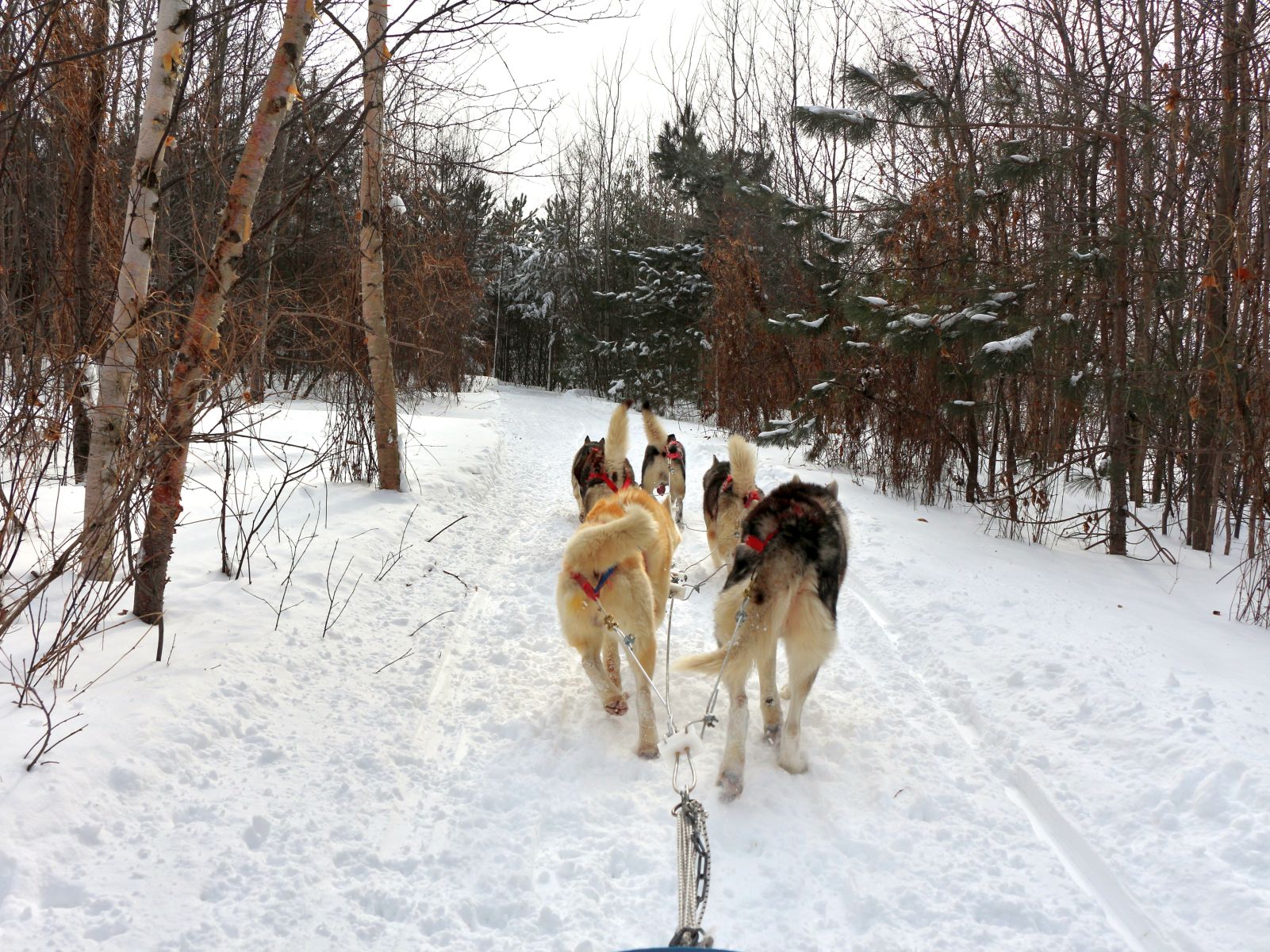
On the narrowest stretch of the trail, hemmed in by forest, Fripouille locked his icy-blue eyes onto me. “Hey, why aren’t we moving?” he seemed to be asking. Not that he could ask me as much. Fripouille (Scoundrel in English) was one of six Alaskan huskies standing in front of me, howling in cacophonic impatience. I gripped the bar of the wooden sled and kept one foot on the brake lever, as I had been instructed by Antoine Simard, the energetic manager and dogsledding trainer of Expédition Mi-Loup on Ile d’Orleans, a few miles downriver from Quebec City.
It was my first time on a dogsled, and I didn’t know how to answer Fripouille, because in this moment, I was also experiencing my first dogsled traffic jam.
Several dogs pulling the sled in front of us had stopped on the side of the trail for a bathroom break. But these dogs were pros at pooping on the run, and had finished before another bark could crack the crisp breeze crossing the island. I lifted my foot off the metal brake. The clanking sound was all Fripouille and company needed to send them trotting, even before my wife, sitting in the sled’s only seat, could shout “allez!” (go!).
And then, gracefulness in motion: six furry tails waving in unison; tongues flapping and steaming. Our faces smacking cold, clean air while traveling fossil fuel-free. No, it wasn’t the Iditarod, but we glided at a comfortable pace that allowed us to absorb views from the trail that first passed through snow-burdened evergreens and then rose up to the island’s naked spine.
And that was part of our plan. My wife and I live in New York City, where we find winter little more than a nuisance of slushy, un-shoveled sidewalks and brusque exchanges — something that just has to be tolerated. We wanted to learn how to look past that limited and unfortunate view of a season. To do that, we had decided to travel to a place where winter is bolder and longer, where winter is not merely tolerated, but also put into one’s service, even embraced.
But first, I had to let an illusion die. I have always wanted to shout a particular word, a syllable that sends muscle into action: mush! The word owes its existence to the peculiar topography of Canada’s bilingual legacy that began with French dogsledders shouting the command marche (“go!”) to their dogs, which became bastardized in English as “mush.” I wanted to feel that history, experience it, pass it on.
Alas, the word has mostly fallen out of use. “It doesn’t matter if you say mush, marche, allez, whatever. The dogs won’t move,” Antoine had told us during our briefing. “The dogs hear the brake release noise as their signal to run.” His buoyancy defied the morning’s chilly gusts, the flaps on his hat up, his beard keeping his face amply warm.
My mushing fantasy had not fallen completely through the ice, however. The word “mush” reentered French, naming the person who drives the dogsled: le musher. In a charming tangle of Canada’s sometimes antagonistic history of language, the word musher is the same in English. This made me a musher, no matter what language I speak.
Fripouille led us back to our launch point outside Auberge Le P’tit Bonheur, an inn that occupies a stone and wood building older than the word musher. Alaskan huskies, their thick fur in the subdued hues of frigid wilderness, distinctly resemble the wolves of their ancestry, but I never knew they were world-class cuddlers. A few strokes along the deep warmness of their neck fur sent them into a nuzzle frenzy, almost knocking me over. An aura of husky musk became our wearable souvenir.
Antoine manages 160 sled dogs and 60 puppies, not one of them named after a real person. Fictional characters, however, remain fair game. When he mentioned that one is named Homer (as in Bart Simpson’s father), I suspected Homer might have been in the back row of our sled team, since he kept pulling to the side of the trail to chomp indulgently on mouthfuls of snow like doughnuts.
The Slow Squeeze
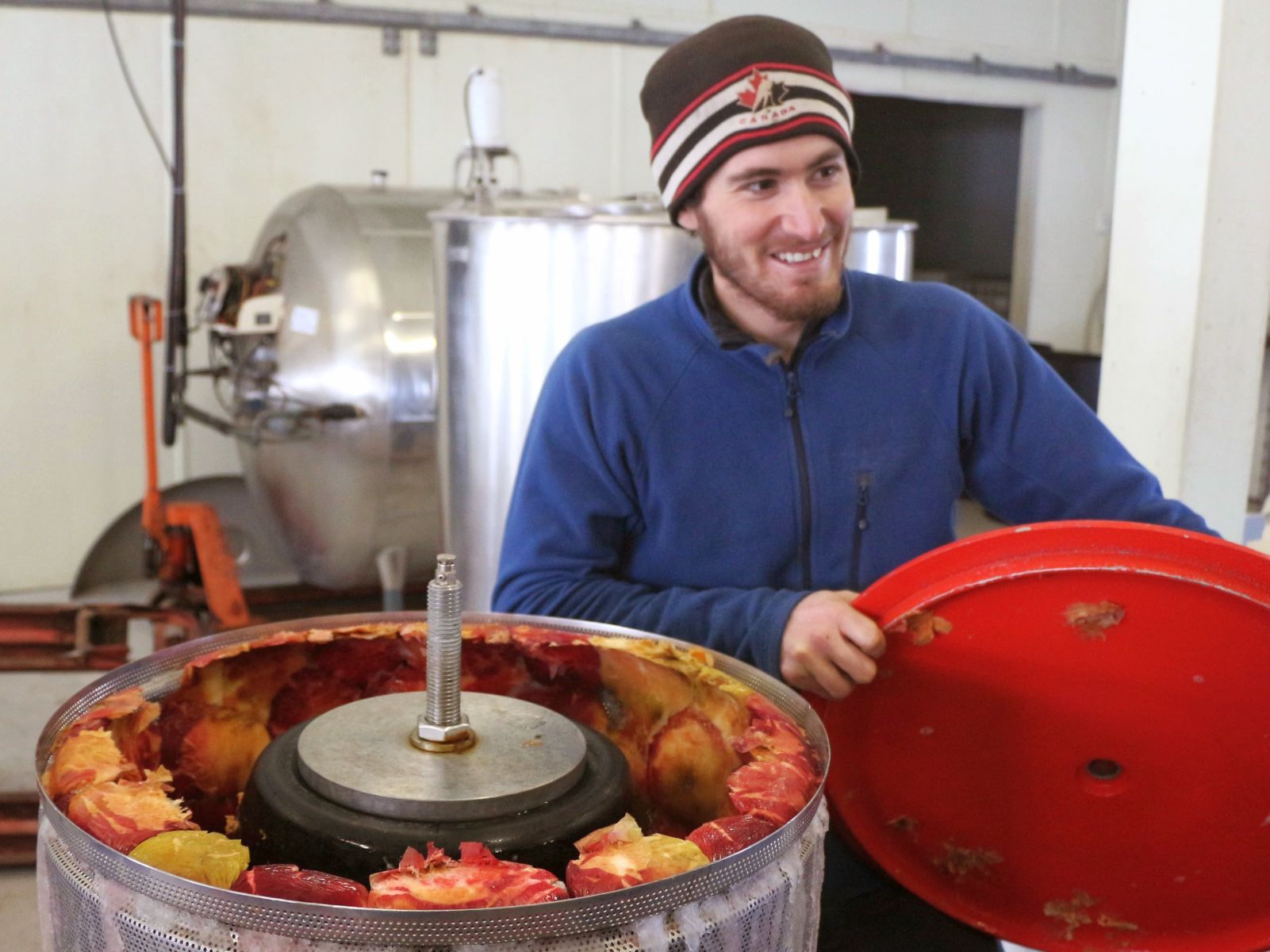
A few days before, we’d traveled to the other side of Ile d’Orleans to visit the orchard of Domaine de la source à Marguerite, where winemaker Conrad Dion offered us a peek at the process of pressing frozen apples to make cidre de glace — ice cider, a specialty of the region.
In the winery’s garage-like workroom, Conrad and his assistant Jean-François, both in rubber boots and knit caps, plugged their fingers in their ears, exaggerating the pose as if a cartoon bomb were about to explode, insuring my wife and I mimicked them. Jean-François opened a valve on top of a cylindrical press, inside of which a thick-walled rubber balloon shot out a fierce hiss, releasing its 50 pounds per square inch of pressure.
Jean-François removed the metal lid from the press to reveal hundreds of flattened apples, still frozen, stuck to the outer wall. The syrupy juice had emerged from tiny holes on the outside of the press, as if it had been sweat out.
Why press the apples frozen? As with pressing frozen grapes to make ice wine, pressing frozen apples produces a concentrated juice because more of the liquid stays behind as ice. The process results in a sweeter, more coveted prize, owing to the higher sugar content, so long as the climate reliably provides a season-long deep freeze.
Jean-François passed me a hydrometer, a device like a pirate’s spyglass. I peeked inside to find a blue line almost off the scale: 34 percent. Was the blue line the sugar percentage? “Oui,” Jean-François answered, his Quebecois accent shaping the word into a casually clipped “weh.”
My wife and I had already been familiar with ice cider’s allure. Four years before we got married on the island and served a case of Domaine Marguerite’s ice cider to our guests during dessert. One of our guests made her particular fondness of the beverage known by announcing, “Ice cider is my new boyfriend!” in front of her boyfriend.
I had imagined I’d hear a percussive concert of shattering frozen fruit during the pressing, but it proved to be much less dramatic. The pressing requires about an hour, depending on the outside temperature where the crates of picked apples are stored. The only sound from the press, aside from its brief wail of sibilance when deflating, was a gentle, therapeutic trickle of thick juice falling into a tray.
The juice would then ferment for six weeks before being bottled. But time is not the only laborious factor. Conrad told us that 80 apples are needed to make one 375 milliliter bottle.
“Quatre-vingt pommes? (eighty apples)?” I asked, insuring my basic French skills hadn’t deceived me.
“Weh, weh.”
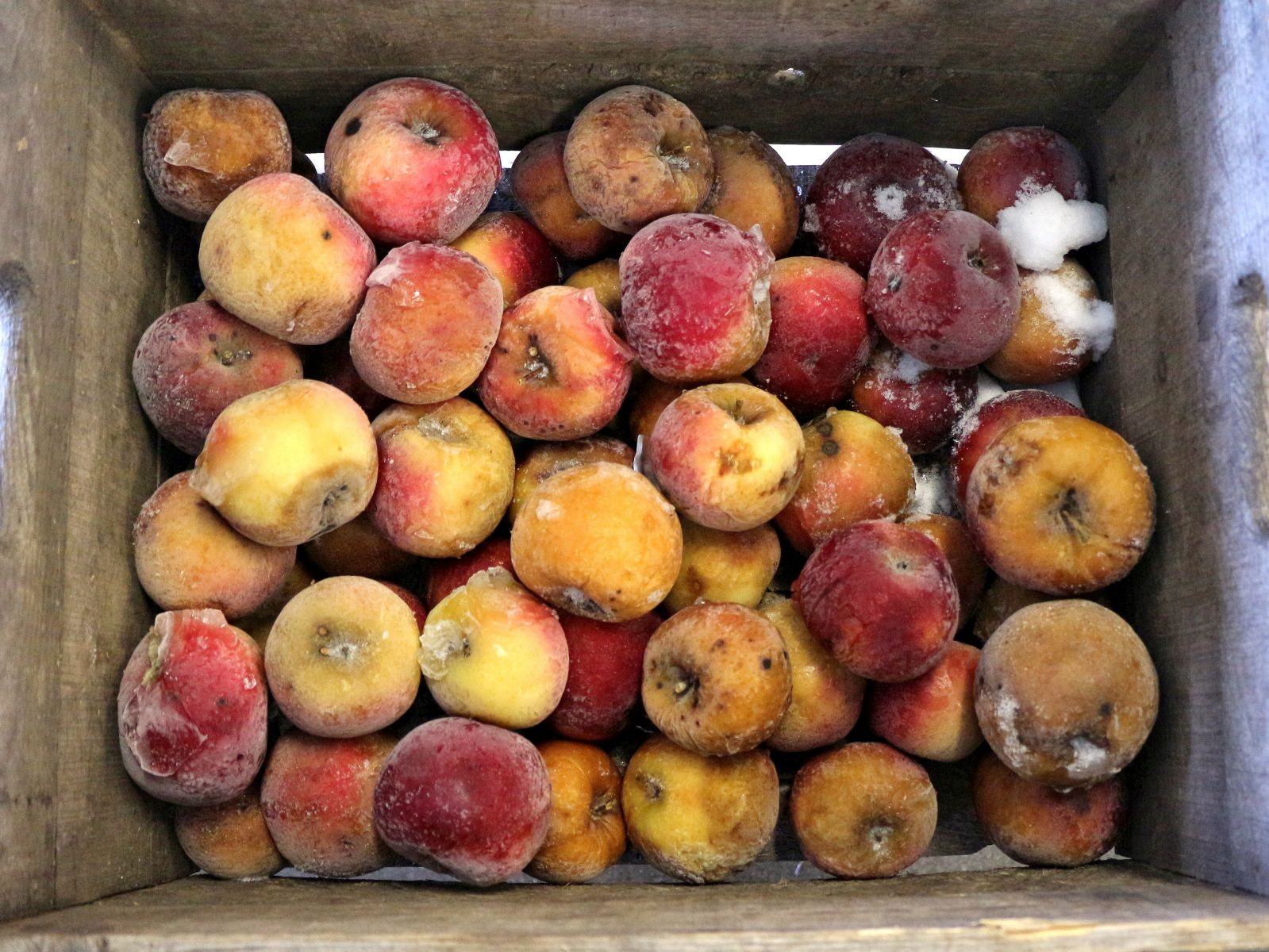
Across the road, a few apples, having turned orange and glistening as if candied, still dangled off bare black branches. “We left a few apples for the birds,” Conrad said. I picked one. It felt as hard as a billiard ball. I reckoned the birds needed ample patience — and strong beaks — to snack on these natural juice pops.
Domaine Marguerite’s ice cider has won numerous awards in competitions held in the Finger Lakes region of neighboring New York State, a feat more admirable considering that Conrad and his wife have only been making ice cider since 2001. But that is a long time in ice cider years. Frozen apples were first pressed in the late 1980s in the southern part of the province, the resulting creation following poutine as another Quebecois culinary invention.
Budding winemakers from milder climates take note: cheating by putting fresh apples in a freezer will fail. Apples must be kept outside to allow air to freely circulate around them, preserving their flavor, that modern flavor of the Quebecois winter, of oenological ingenuity, of boyfriend replacement.
Sleeping with the Moai
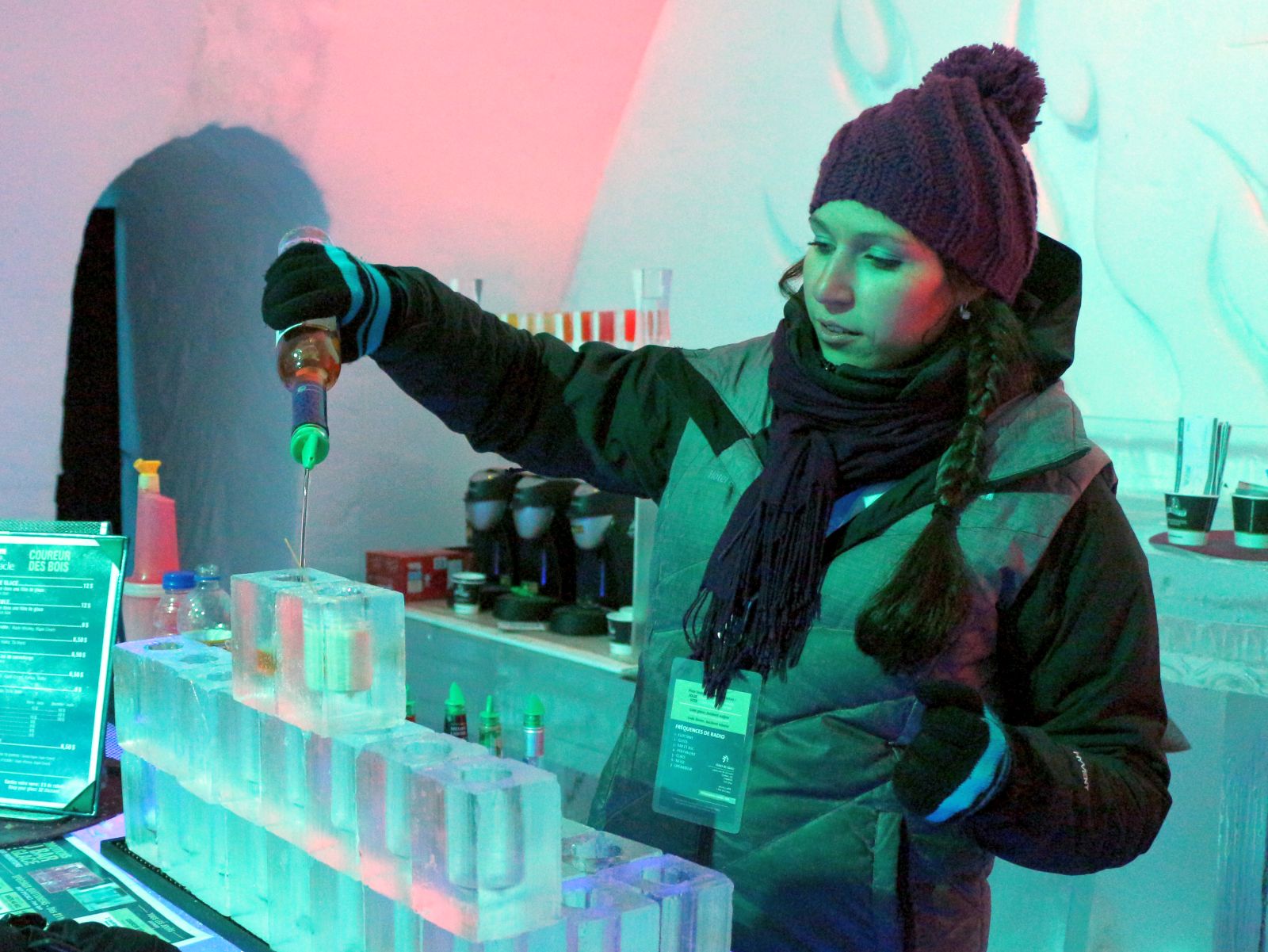
Ice cider appears on drink menus at many restaurants in nearby Quebec City. Flute glasses of ice cider commonly accompany ris de veau (sweetbreads), cheese plates, and crème brûlée. Our next serving of ice cider arrived the following evening at the bar of Quebec City’s Hôtel de Glace, the only ice hotel in the Americas.
Located on the grounds of what used to be a zoo 10 minutes north of Quebec City’s old town, the single-level ice hotel was constructed out of 25,000 tons of snow and ice: vaulted walls, chairs, the bar, everything. That total doesn’t count the daily requirements of the bar that serves drinks in glasses made of ice. Thankfully, I avoided the awkwardness of a Christmas Story moment because alcohol freezes at a temperature lower than water, thus my lips didn’t stick to the glass.
We didn’t stick to the ice pews in the hotel’s non-denominational ice church either. Each pew was draped in a quilt, insulating us from the ice but still allowing the seat to exude a mandatory hardness expected of church seating. With clear ice posts and a packed snow vault reaching over 20 feet high, the ice church seemed to be a place where it was acceptable, even encouraged, to keep the sermons short and sweet.
“We have 40 weddings here each year. We even had one wedding where the groom was a Scotsman who walked down the aisle in traditional Scottish clothing. Know what I mean?” announced our guide Caroline Lafrance from her fur-ringed parka hood. While my half-frozen lips had turned my pronunciation skills into a slur-fest worthy of a wino, Caroline’s speech remained almost flawless, the temperature unable to affect her joke deliveries.
Several of the hotel’s 44 rooms showcased one-of-a-kind sculptures by 15 artists. The Pegasus room featured a 10-foot-high packed snow carving of the winged stallion on a wall. Thick-bodied moai towered over the bed of the Île de Pâques (Easter Island) room.
Two of the rooms featured fireplaces. But guests needed not worry about melted walls collapsing on them as they enjoyed the fireplace’s glow. “They warm your heart, not your body,” Caroline announced. The custom-built fireplaces, though metal-framed — the only metal I’d seen in the ice hotel — are doubly insulated so the heat quickly rises up the vent and out of the hotel, allowing the flame’s gentle flicker, but not its heat, to mesmerize guests.
The construction of an ice hotel could only succeed in an environment that falls under a prolonged deep freeze. All those brief, delicious, spring-like warm-up periods we New Yorkers savor during our winter would spell doom for an ice building. The only melting with which we needed to concern ourselves was known as the rookie’s ring. “Don’t leave your ring on the night table in your room,” Caroline warned. “The ring is warmer than the ice and we will have to chisel it out in the morning.”
In addition to chisels, the hotel’s maintenance crew kept an arsenal of tools specifically suited to ice-based architecture. I occasionally saw a three-man crew passing me in the halls with a wheelbarrow of snow and a couple shovels. I imagined they are the ones tasked with covering the handiwork of snickering couples who have carved their initials into the walls.
We walked to the hotel’s Celsius lounge, a separate, heated building to the side of the hotel, where we stored everything except the clothes we needed for sleeping. We received instruction on how to survive in our room overnight: cotton clothing traps moisture, making you feel cold, thus is your enemy; change your clothes while inside the sleeping bag to prevent heat from escaping; the sleeping bags are rated to -22 degrees Fahrenheit, but the rooms remain at a steady 24 degrees, so you may sleep naked if you wish (the sleeping bags are washed every day).
Ice, especially the custom-made, bubble-free, crystal clear ice used by the ice hotel’s sculptors, would have presented a privacy issue, so the walls were fashioned from packed snow almost a yard thick. The hulky, vaulted shell surrounding us made me feel as if we had hunkered down in the catacombs of a church, or a dungeon turned condo — the ultimate in creative urban renewal — complete with a mattress atop an ice platform.
The experience seemed to straddle the unlikely territory from camping to backpacking to luxury fantasy. But the night’s intense quietness struck me the most. Once zipped up inside the sleeping bag, I heard nothing but the rhythm of our breathing and the occasional chiming crackle from ice forming and melting on the outside of my ski mask, just below my nose.
Along the way, we learned the best way to make a bathroom run, a journey that involved walking to a heated outhouse outside the hotel: quickly.
Cold Enough for a Parade
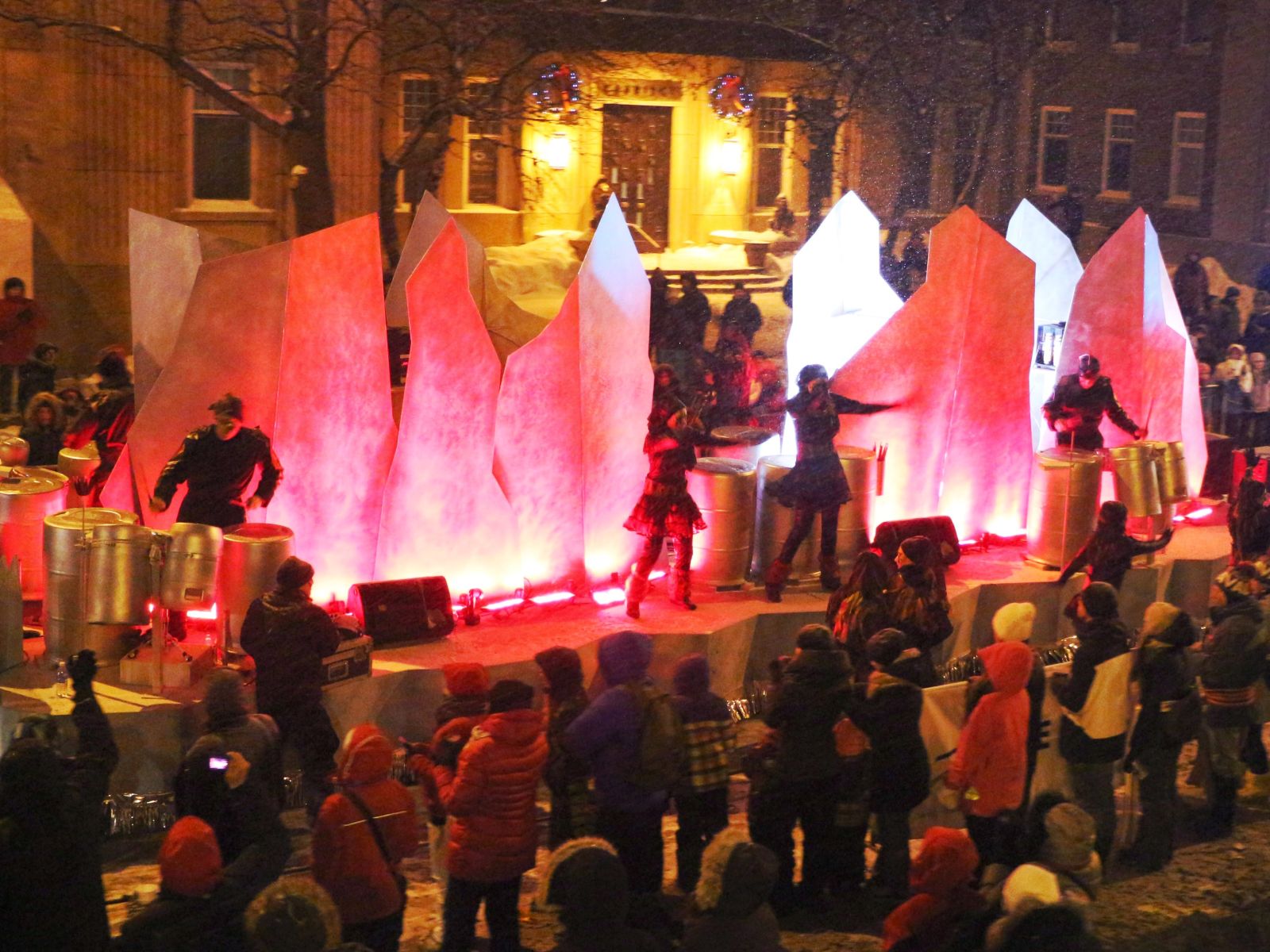
The next night, in the sloping streets of Quebec City’s walled old town, we encountered something that normally fills New Yorkers with dread: snowy, slushy sidewalks. The folks of Quebec City turned the situation to their advantage by pulling along their young ones in sleds, saving the tots the hassle of slipping and falling down.
The residents and storeowners with shovels in hand wore the same crumpled grimaces of snow shovelers everywhere: the “just get it done” face. But in Quebec City, shoveling served to better expose dozens of ice sculptures on the sidewalks, rivaling the ice hotel’s selection. A hockey player in mid-pass, a beaver, a miniature Eiffel Tower, a mannequin modeling a t-shirt — these were just a few of the pieces fronting stores and restaurants, as if a vigorous competition for creating the most enticing sculpture had seized the city.
Quebec City saw no reason to limit itself to a single ice bar. Several nightclubs, including a drag cabaret venue, had built ice bars on the sidewalk, heat-free LED lights illuminating the carved contours of the counters with slowly changing colors.
Just outside the city’s 17-Century fortified wall stood a 30-foot-high ice castle, perhaps taking inspiration from the former. The structure, complete with a jagged parapet, seemed to fulfill a Lego builder’s dream, one where the rare and coveted clear windshield bricks are unlimited.
At night, the temperature sunk to 5 degrees Fahrenheit and gusts of snow were greedily biting at every inch of exposed flesh. What is a city to do when confronted with such climatic challenges? Why, hold a carnival parade, of course.
For Quebec City’s 60th annual carnival celebration, the city closed down the Grande Allee, the city’s widest avenue, for a procession of marching bands (gloves optional), creepy avian-themed stilt-walkers and trailers full of oil-drum percussionists and carnival dancers wearing more clothing than their New Orleans counterparts, but otherwise matching the American city’s delicious dance steps move for move.
Acrobats tumbling onto a float-bound trampoline mocked the temperature with shorts over skin-colored leggings. I noticed that most of the Quebecois stayed put and savored every somersault and tight drumming riff. We remained in the gusts as long as we could stand, but eventually, we wimped out and sat in the provided warming station (a yellow school bus with the heat turned on) for a while.
It looks like our education in embracing winter is not yet complete. I think we might have to return next winter for another lesson.

/
 Darrin DuFord is a travel writer, mapgazer, and jungle rodent connoisseur. He has written for BBC Travel, the San Francisco Chronicle, Roads & Kingdoms, Gastronomica, and Perceptive Travel, among other publications. His work appears in Stories of Music, a multimedia anthology released in November 2015 by Timbre Press. Follow him on Twitter at @darrinduford.
Darrin DuFord is a travel writer, mapgazer, and jungle rodent connoisseur. He has written for BBC Travel, the San Francisco Chronicle, Roads & Kingdoms, Gastronomica, and Perceptive Travel, among other publications. His work appears in Stories of Music, a multimedia anthology released in November 2015 by Timbre Press. Follow him on Twitter at @darrinduford.
The post Learning To Befriend Winter In Quebec appeared first on The Expeditioner Travel Site.
]]>The post Travel Guide To Quebec City (HD) [Travel Video] appeared first on The Expeditioner Travel Site.
]]>In this travel video guide from Quebec City, I travel around Quebec City including its historic Old Town (a UNESCO World Heritage Site), stop in at the famed Ice Hotel where visitors spend the night on ice beds, and explore the Winter Carnival, the biggest winter carnival in the world that attracts over 600,000 people a year. I finish up the Winter Carnival by watching a night parade and partying it up at a nighttime outdoor snow rave.
[Visit The Expeditioner YouTube Channel Here]
By Matt Stabile

ABOUT THE AUTHOR
 Matt Stabile is the Founder and Editor-in-Chief of The Expeditioner. The Expeditioner began in 2008 and is headquartered in New York City. You can read his writings, watch his travel videos or contact him at any time at TheExpeditioner.com. (@TheExpeditioner)
Matt Stabile is the Founder and Editor-in-Chief of The Expeditioner. The Expeditioner began in 2008 and is headquartered in New York City. You can read his writings, watch his travel videos or contact him at any time at TheExpeditioner.com. (@TheExpeditioner)
The post Travel Guide To Quebec City (HD) [Travel Video] appeared first on The Expeditioner Travel Site.
]]>The post Turning Points: A Dispatch From The End Of The Country appeared first on The Expeditioner Travel Site.
]]>
In the days preceding winter solstice, the sky enshrouding Barrow, Alaska, is a hue somewhere between mineral pitch and squid ink. And the skyline stays that way for all of a handful of minutes when it winnows a degree or two lighter, the barest luminescence along the horizon, like the last gasps of cathode ray behind a dead television screen. At high noon, your skin tone is cobalt, and the flat soil and the frozen Arctic Sea surrounding you resembles the surface of the moon.
When you arrive at the U.S.’s northernmost airport — one named ironically after two men, Wiley Post and Will Rogers, whose lives were extinguished some nine miles from the airport’s tarmac when their plane barreled into the sea — you experience the region’s bracing winter conditions fairly immediately. The wheels bounce hard across the single asphalt runway, the rear door opens, and you descend the stairs into a wind with the bite of hail. It’s the only air travel I’ve experienced where part of the flight attendants’ pre-landing protocol involves the donning of down parkas, complete with Alaska Airlines insignia.
From there, you can wander to one of the half-dozen eternally idling taxi cabs or brave the sub-zero walk across town to your lodging.
In contrast to the -20 degrees Fahrenheit air temperature outside, the Airport Inn, the most humble of the three hotel options in the northernmost city of the North American continent, is insanely warm. Unbearably warm. Warm enough to trigger the hotel fire alarm twice during the night. The room windows are permanently glazed in frost and separate two distinctly contrasting climatic worlds. But in 24-hour darkness, it hardly matters. Without the hoarfrost-cloaked streetlight mid-window, my hotel view of Barrow would be little more than a blurry stare into an arctic rabbit warren.
It’s early morning of my 40th birthday, and I’m peering out that very window for any sign of approaching headlights, hoping they might signal Bunna Edwardson’s tundra-borne arrival, the Inupiat wilderness guide Barrow native with whom I made arrangements to meet up with for the sole purpose of getting as close as I can to polar bears in their natural habitat. If Bunna doesn’t show, it’s going to be a meandering and likely life-abbreviating self-initiated tour across the arctic ice shield in search of them.
But Bunna barrels into the hotel parking lot right on time. He’s a goateed young man with waist-length hair, disarming smile and hulking figure. He says hello and immediately ducks into the can with a “gotta pee” request for pardon. Soon after, we pack into his idling SUV and begin mucking our way through the deserted, eternally blue-hued streets. It’s then Bunna informs me crossing paths with the polar bears is going to be challenging, if not impossible. The ice pack arrived earlier than normal and already pushed the majority of bears seaward. My arrival may be two weeks too late.
The news dampens my heart, but I knew I was pushing my calendar luck when I made the travel arrangements.
If spending your 40th birthday in 24-hour darkness and 40-degree subzero windchill as you clomp over sea ice in search of polar bears seems a bewildering choice, you may not have yet crossed that milestone yourself. Because when it finally careens its thundering path your way, the proverbial midpoint of your life, shredding the sod of your youth behind you to clumps and detritus, you might also do what you can to limit your company to those whom you can immediately commiserate: other vulnerable species. With half their populations in serious decline, Ursus maritimus, unfortunately, certainly sit within that classification.
In the many months leading to my pilgrimage to Barrow, my imagination had been consumed with bears. They figured prominently into the novel I had been writing, and I had spent the past several years steeped in field biology books about the animals. Each page I turned, I became more and more engrossed in their magnificence — their physical ability, nomadic sensitivity, their oddly human fears and survival tactics. Bear physiology also provided a gamut of literary metaphor possibilities, especially the species of bears — black bears and grizzlies — that survive food-starved winter landscapes buried in the soil. My novel was about a young man who loses a brother and then tangentially becomes unglued at the feet of an unraveling love. It’s a novel about how loss can transform us — the human hibernation some of us fall into during acute periods of grief. The main character in my novel follows grizzly bears into the woods because he can think of no better teachers at his point of need. Bears are cheaper than psychologists and less intimidating, to some of us, than priests.
So there I was, mid-life, supported by a thick sheet of sea ice, and like the character in my novel, looking to bears for salvation. Polar instead of grizzly. (Grizzly are endangered, too, but when your birthday falls in December, your ursine party guests are limited to the non-hibernating variety.)
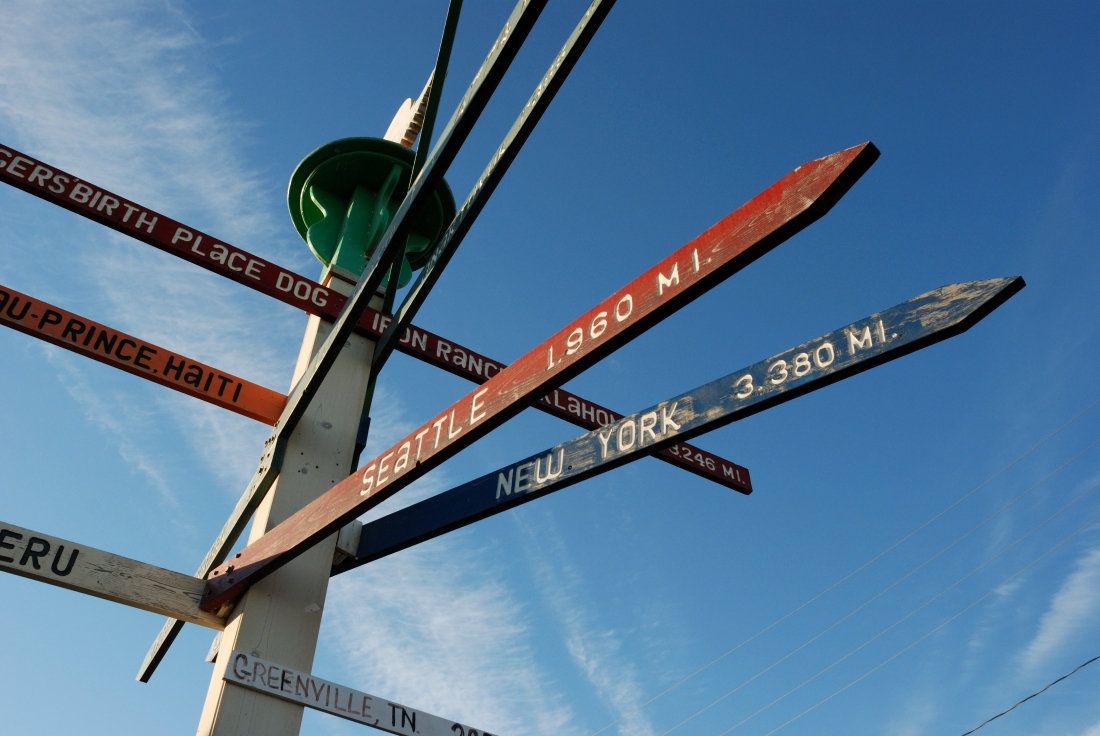
As we drive through Barrow, the landscape through the windshield seems hauntingly separated, its darkness and cold, from the warmth of our heated cab. As if the world between vehicles and houses lacks oxygen and gravity in addition to sunlight. At least that’s how it seems. You step outside, and every movement you make becomes strangely audible. Across the lunar-like surface, your footsteps crackle and your breath hisses. No matter where you drive, you leave your vehicle running. If you possessed a safety harness or long rope, you might feel compelled to tie a bowline knotted end to the axle for reassurance you’ll find your way back if stepping even mere yards away. It’s that dark, that cold — a seemingly other world.
Bunna gestures at the different cube-shaped abodes we pass where family and friends lay sleeping, small houses built on stilts to keep them from permafrost adhesion and with foot-thick walls to bay the cold. The soft incandescence of solo-lit windows is the only sign of life within these dwellings, the only reassurance we’re not driving through a frozen ghost town. Aside from swirls of snow and clouds streaming from roof vents, the entire village seems motionless.
After we stop at the sole 24-hour convenience store to top Bunna’s to-go mug with dark roast, the sparsely lit oasis of Barrow disappears in our rear view, swallowed in the darkness. Within minutes, our SUV crawls to a stop, and we stare into a blue field swaying with caribou. Their eyes uniformly reflect flashes of our headlights, as many caribou eyes staring back at us as stars in the sky. There must be thousands. In front of us, surrounding us, a spiral galaxy of caribou eyes.
We remain transfixed, two humans and a thousand caribou, staring at one another.
“Wow,” I say, and Bunna just smiles.
Sighting animals, or anything, really, at a distance in Barrow is made easy, thanks to its treeless landscape. The soil of the arctic coastal tundra is locked in a thick and continuous permafrost, yielding very little seasonal vegetation. In the open daylight of summer, you can probably see forever.
We resume moving forward, past the hypnotic stare of caribou, and veer and skid across the rutted roadway. When we approach the only other vehicle we pass, its headlights looming toward us, Bunna palms a CB radio microphone. He knows the vehicle’s driver, and they discuss road conditions and potential polar bear presence. It’s the arctic equivalent to stopping your car and chatting through parted windows. We never see the other vehicle’s driver, just hear his radio wafted voice through clicks of static, and then we are alone again, sharing this long arm of the Arctic Ocean with no one else.
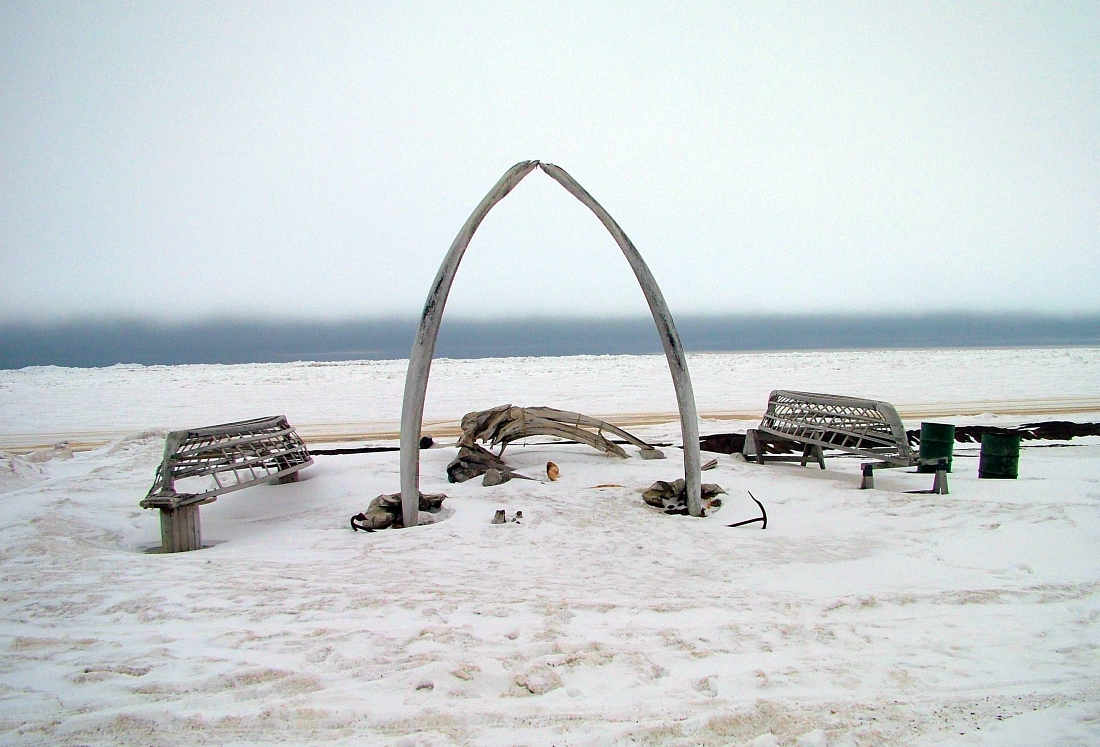
Nine miles north of Barrow, we come to a desolate point where the road, if you can call it a road, comes to a whimpered end. It’s Point Barrow, the northernmost drivable point of all U.S. territory, a spit of land that juts into two conjoined seas: the Chukchi and the Beaufort. But standing at that point, I can’t even tell either direction is sea, at all. It’s all ice and heaved freeze and dark sky.
As we trundle out, Bunna informs me we’re standing on the same spot bowhead whales swim during their spring migration, and I momentarily imagine one breaching through the ice beneath me, its massive skull ripping through the surface, its paired blowholes screeching tree-sized plumes of frosted air. And apparently (this time at least) my imagination isn’t a continent away from reality. I learn the whales are known to do just that, through ice as thick as 24 inches. That, I assume, must be a sight.
But no whales breech the frozen arctic sea ice we hike across. None, at least, we notice. We trudge over the scarred and snowy surface in silence, just the sounds of our feet moving across the shelf of sea ice, the sonorous wind in the distance. And then we arrive at one of the most striking places I’ve probably ever approached, the unmistakable perimeter of the Point Barrow whale bone dumping grounds.
I had heard about this place, read about its popularity with the polar bears, and wondered what it looked like. It’s a sculpture garden that could best the finest museums — story-high rib bones, cupping the sky, claw-shaped skulls the size of semi trucks planted horizontally in the ice, vestigial limb bones, spines the length of mobile homes, all covered in hoarfrost and tinted the color of 3 a.m. I stare at a single vertebrae disk the girth of a coffee table.
“We hunt bowhead,” Bunna informs me.
“I see that,” I say.
“We get to claim 22 a year. Our quota. This is where we clean them, leave what’s left. Far enough away from town, we don’t have to worry about polar bears dumpster diving and then loping through our backyards after.”
Imagine a small automobile junk yard and replace car parts with whale bones — next to a frozen sea. That’s the Point Barrow whale bone dumping grounds. It would be the perfect place for a bowhead on the prowl for a spare baleen.
I stand fairly still, mesmerized by the sea of giant bones before me, beneath me, around me. And then I start imagining the length of time ahead of us, how many years, before the same is all we’ll have left of the bear I’ve come these 3,000 miles to meet. How long until we make their gradual disappearance permanent? How many days until the polar bear bone dumping grounds is complete?
In North America and Canada, the polar bear has already earned its way into the ranks of the endangered, and their complete demise seems within arm’s length when you consider the primary factor threatening its survival: melting ice. Of all planetary trends, its gradual and not so gradual warming has become the one seemingly impossible to slow, much less reverse.
And the clock is ticking. The USGS predicts two thirds of the world polar bear population will disappear over the next four decades, and that’s based on moderate projections of sea ice melt. 40 years and the entire populations of polar bears in Alaska, Europe and Asia may be gone. Small, dispersed populations may survive another two decades in Greenland and northern Canada, before they, too, will disappear from everywhere but our memories and imaginations. It’s entirely possible within our lifetime we will know a world without polar bears, not a single one, roaming the moonlit horizon.
I stand amidst the frozen whale bones and wonder how many people care. If a tree falls in the forest (or marmot, a finch, a bear) does anybody hear? If we lose an animal hardly anyone encounters except in zoos and cola commercials, does it matter? Who does it matter to?
But it does matter. Significantly. And the reasons are numerous. There’s the animal itself, the world’s largest bear, an amazingly evolved mammal with unique adaptive physical abilities allowing it unrivalled dexterity across land, ice and open water. And if that doesn’t resonate, there’s the arctic canary in the coalmine analogy — the polar bear’s survival depending on a shelf of ice that, if permanently melted, signals a whole downstream shitstorm of peril for our own survival, a new climactic norm meets rogue carnival ride none of us are going to like a whole lot or find livable.
Think eustatic sea level rise in yards not inches — the washing away of New York, New York and London, the sudden creation of one million homeless people in Nigeria alone. And that’s just coastal displacement, land erosion. Add to that rampant storm surge flooding, habitat loss, water quality and groundwater characteristic changes, agriculture/aquaculture impacts and the global economic repercussions of this Dino De Laurentiis-like production grow direr yet. There’s a reason we should do everything we can to protect the unique habitat that sustains the polar bear, and it has more to do with our own survival than the downy, thousand-pound animal that would also obviously benefit.
But beyond those two valid and compelling reasons, shouldn’t we work to sustain the existence of the polar bear, and all vulnerable and endangered species, for the simple reason their plight is a shared burden? Do we really have an ethical choice? The mantra of leaving no one behind shouldn’t be reserved exclusively to the moral code of the armed services. If we fail at sustaining the species of beings we share our planet with, it makes a compelling statement about who we are, and perhaps an omen of where we’re headed.
I spent the majority of my 40th birthday alone with a former stranger — a congenial Inupiat and enthusiastic fan of his native city — a city that sits more than 500 miles from the next closest comparable one. No bears joined our two-person nomadic party across Barrow’s frozen arctic sea coast that day. None in view. But before we left the whale bone dumping grounds, Bunna spotted something and stopped dead in his tracks.
He grabbed my shoulder, pushed me gently toward the ice beneath our feet. And then I saw them in the murky darkness, the unmistakable footprints and claw marks of a recently passing bear. I placed my gloved hand into the center of the nearest mark, an oval dent in the ice my open hand barely obscured, a single footprint at least 12 inches in diameter and elongated an additional several inches by the spire of claws.
Your hand swallowed against theirs, it’s impossible not to be moved by the magnitude of the animal that left so determined a mark before your own. We moved slowly forward, the serrated pattern of footprints welted into the ice beneath us. We followed them, a step at a time, blindly into the dark.
By Kipp Wessel
[Barrow by Diana Norgaard/Flickr; Barrow Milepost by Andrei Taranchenko/Flickr; Barrow, Alaska by Zanzabar Photography/Flickr]

[In lieu of payment for this article, Kipp has requested that a donation on his behalf be made to Polar Bears International, the world’s leading polar bear conservation group dedicated to saving polar bears by saving their sea ice habitat. To find out more about the organization, please visit PolarBearsInternational.org]
ABOUT THE AUTHOR
 Kipp Wessel’s stories have appeared in a dozen commercial and literary magazines, including Southern Humanities Review, CutBank and Big Sky Journal. He lives in Minnesota and earned his MFA and a Fiction Fellowship from the University of Montana. His debut novel, First, You Swallow the Moon – a modern love story of a man who attempts to avert heartbreak by transforming himself into a bear, is slated for an early 2014 release. To learn more, visit: KippWessel.com.
Kipp Wessel’s stories have appeared in a dozen commercial and literary magazines, including Southern Humanities Review, CutBank and Big Sky Journal. He lives in Minnesota and earned his MFA and a Fiction Fellowship from the University of Montana. His debut novel, First, You Swallow the Moon – a modern love story of a man who attempts to avert heartbreak by transforming himself into a bear, is slated for an early 2014 release. To learn more, visit: KippWessel.com.
The post Turning Points: A Dispatch From The End Of The Country appeared first on The Expeditioner Travel Site.
]]>The post Australia v. New Zealand Skiing: A Rumble On The Slopes appeared first on The Expeditioner Travel Site.
]]>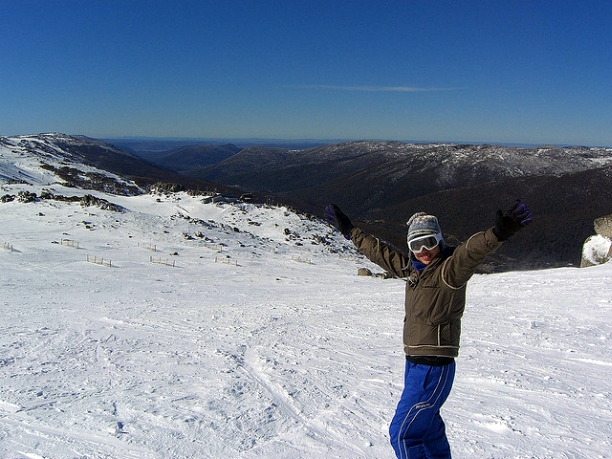
You might have heard there’s just a bit of rivalry between Australia and New Zealand — a fairly healthy spirit of antagonism and one-upmanship which permeates everything from sports to music. It’s okay. They don’t really hate each other. Well, not that much.
Today, we’re going to focus on one area where the competition is particularly fierce and ask: Who delivers the best skiing experience?
Uh, no-brainer, right? New Zealand surely has the best downhill snow-related thrills because of those incredible Middle Earth mountain peaks, right? And isn’t Australia just a big, dry empty place surrounded by beaches?
Well, actually, the answer isn’t quite so clear cut.
Australian Skiing
Yes, that’s right, in case you’re unaware (and no, we don’t mean “Austria”), Australia offers snow and plenty of it just right for skiing.
The Australian states of New South Wales, Victoria and Tasmania all boast high-country areas that offer excellent ski conditions during the winter months. The biggest and best areas are extremely accessible, with Victoria’s Mount Buller a three-hour drive from Melbourne, while the major ski resorts of Thredbo and Perisher in New South Wales are only about six or seven hours drive from Sydney.
New Zealand Skiing
New Zealand is, of course, unquestionably an awesome skiing destination.
It ticks all the boxes: spectacular mountainous terrain, high latitude and a strong economy and tourist industry well equipped to deal with an influx of crazy thrill-seekers.
Skiing Quality Compared
Okay, let’s get down to business. Who has the most to offer?
Well, for the record, Australia actually has the largest commercial ski field in the Southern Hemisphere. Perisher, in the Snowy Mountains of New South Wales, boasts 3,076 acres of sweet, sweet skiing goodness. The ski resort of Thredbo, meanwhile, offers the longest run in either Australia or New Zealand at 3.7 miles.
By contrast, the largest commercial ski field in New Zealand is Mt Raupehu’s Whakapapa resort, which has a relatively small 1,259 acres.
The Kiwis, however, possess the longest vertical descent — 2,368 feet on the Turoa side of Mount Ruapehu.
Furthermore, the land-of-the-long-white-cloud definitely takes the lead in terms of snow fall. The Canterbury region of New Zealand’s Mount Hutt and the club fields of Craigieburn, Cheeseman and Broken River get an average snow of more than 13 feet a season, while Australian ski fields average about 10 feet. If deep, untracked powder is your thing, then New Zealand should be your choice.
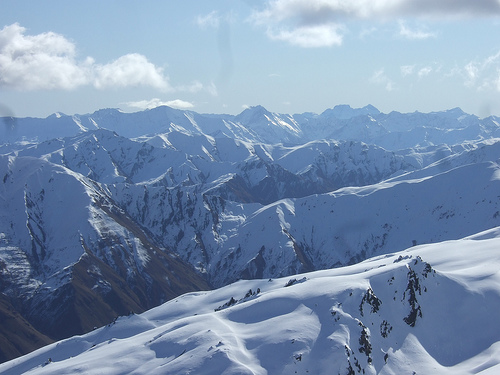
Still, for those who stick mostly to groomed slopes, the quality won’t be all that dissimilar. There a lot of arguments flying back and forth across the Tasman Sea about which country deals the best ski quality for the average skier. The reality is that the the truth will differ from individual to individual, and from field to field.
However, beyond the commercial boundaries, New Zealand does offer some spectacular and challenging terrain, and the chance to enjoy something removed from the hustle and bustle of the resorts. Think Coronet Peak’s back bowls, Turoa’s glacier or Remarkable’s homeward bound.
New Zealand is also the place to go for one of the definitive snow-bound thrills: Heli-Skiing. For many, there’s no experience quite like being flown up a remote mountainside by chopper then left to ski down incredible pristine terrain. It’s one experience that is, as yet, unavailable in Australia.
However, Aussies can boast something the Kiwis can’t: Tree-skiing. While all of New Zealand skiing is above the tree line, Australian snow gums will remain in evidence even after heavy falls.
Accommodation and Facilities
Australia offers plenty of accommodation that is either on or extremely close to the slopes, providing a mountain village vibe that’s similar to the European experience. Thredbo and Perisher not only offer places to crash (overnight, we mean), but they are both very close to the town of Jindabyne, a town packed with accommodation.
In New Zealand, you generally have to drive up the mountains to get to your slopes, with places to stay limited to satellite towns and villages.
Head into a town like Queenstown or Wanaka and you’ll be likely to find yourself with a 30-minute ride in a car before you strap on the skis. Not to mention that the road from Queenstown to the Remarkables in the morning can be a hair-raising experience in and of itself.
On the flip-side, you then have a choice of several ski fields, and, of course, the scenery is, well, epic.
In terms of catering, it’s probably best to pack a lunch when you’re heading to a Kiwi ski-field. Aussie slopes generally cater better, where top-notch grub is available on the slopes and from the ski-in/ski-out villages.
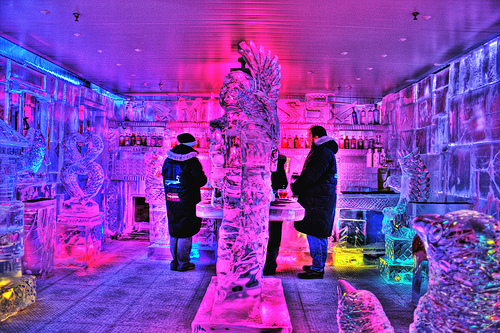
Party Vibe and General Good Times
The ski-fields in Australia ably cater to those looking for what we can quaintly call “apres-ski” options. A town like Perisher offers scope for people to enjoy anything from a romantic dinner by candlelight, to a drink or two in a bar, or just the chance to dance until dawn in a nightclub.
However, for sheer unbridled nighttime thrills, then Queenstown — in New Zealand’s South Island — wins all the plaudits. It is all kinds of stunning. This lakeside town features over 100 restaurants and bars clustered together within a .6 square-mile area, which makes it a Mecca for those who like to ski by day and party by night.
It also has the added cache of a rather spectacular outlook, with views of the crystalline Lake Wakitipu and the Remarkables (a truly aptly-named mountain range). Plus, if you get sick of skiing, you’ve got so many other options, from bushwalking to bungee jumping.
The Verdict
Would it be slightly cowardly of us to draw a line in the snow and say it’s largely a personal choice as to which country offers the best skiing?
Australian ski resorts are excellent and fun destinations, especially for families and beginners. We definitely enjoy the ski-in, ski-out access from accommodations (and the bars) as well. In terms of cost, they are a relatively affordable option too, with a ski resort like Selwyn Snowfields offering budget package deals for families.
However, for the hardcore enthusiast, New Zealand is the unbeatable option with great snow and some stunning slopes — especially off the beaten track. When combined with the favorable exchange rate for most international visitors, New Zealand represents outstanding value for money as well as a great time.
By Richie Black
[Julia at top of Supertrail, Thredbo by Alpha via/Flickr; Looking West-ish from Coronet Peak by Yun Huang Yong/Flickr; Minus5 Ice Bar Queenstown by Adam Selwood/Flickr]

About the Author
Richie is a Sydney-based writer famed for his sophistication, flair and hair. He blogs his ass across a large number of websites, including Shlunk (Life Advice From the Experts), Sydney.com and VisitNSW. He is also a writer with credits for TV and the stage, notably The Local and The Cardboard Cartel (in which he also performed), both for the Sydney Festival.
The post Australia v. New Zealand Skiing: A Rumble On The Slopes appeared first on The Expeditioner Travel Site.
]]>The post In Search Of The Northern Lights appeared first on The Expeditioner Travel Site.
]]>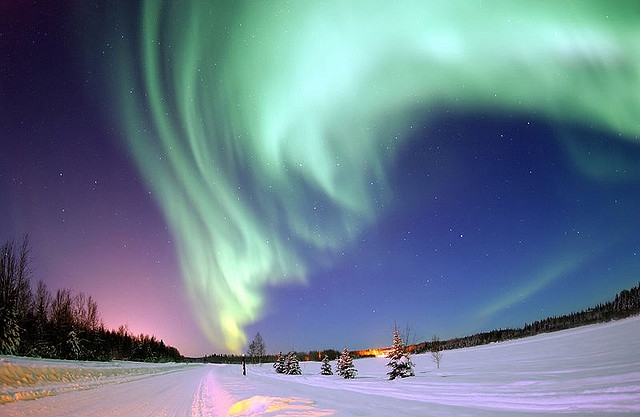
We huddled in the dark in front of the laptop. Webcams pointed out across the vast frozen lake would pick up any sign of the aurora borealis before the human eye. Outside the temperature was several degrees below freezing and the snow was knee-deep. It was our sixth attempt at seeing the northern lights, and over the years we had blazed a trail of failure right across the Arctic Circle. Our hopes that night, from bitter experience, were not high.
Northern lights hunting has really taken off recently, ever since a BBC documentary starring Joanna Lumley aired a few years ago. At the very end, the lights finally reveal themselves to a tearful Lumley, fulfilling a lifelong dream. But it had never quite worked that way for us, and whenever anyone heard we were extending our fruitless search for another year, their response was never encouraging: “Everyone sees them, don’t they? Joanna Lumley did!”
Our first attempt was back in 2006, smack in the middle of a solar minimum. The lights are dependent upon sun spot activity throwing charged particles out into space. The aurora is caused by these particles ionising in the Earth’s atmosphere, releasing the incredible colors. The sun goes through cycles of more and less activity, and flares releasing the particles are both more likely and more intense during a solar maximum. The chances are best around an equinox, and the impact most impressive in areas with no light pollution and during a new moon.
We knew our chances were initially slim, but there was more to our quest than just the lights themselves. The Arctic Circle is a beguiling place. Just traveling in such a harsh environment and seeing how the locals unblinkingly get on with their lives while my hometown grinds to a halt under a smattering of snow is humbling. In the depths of winter the sun never rises, giving the few hours of daylight the constant orange glow of sunset around the horizon. The landscape is stunning, as pine tree after pine tree stretches into the distance. Other than enjoying long walks in the snow-bound forests of the far north, there are plenty of other activities to try.
On a beautifully clear night, we travelled by dog sled, shooting silently through the snow-laden trees in Europe’s last great wilderness. The huskies love to run, so much so that when we stopped they howled and strained at their harnesses, desperate to carry on. We braved temperatures of minus-30, and gazed up at the myriad patchwork of thousands upon thousands of stars through the clear night air. But there was no aurora, and unbelievably, for the next five years, this would remain the solitary clear night we would experience in the Arctic.
Although far less peaceful than a moonlight husky ride, snowmobiling remains one of the most exciting things I have ever done. Opening up the throttle, I experienced the thrill of speeding across a snow-covered frozen lake at 55 mph. While in a more athletic mood, I took a lesson in cross-country skiing, and spent the best part of three hours falling over. It is also possible to snowshoe and ice fish there. And in rally-mad Finland, you can even take an icy driving lesson.
But there are also more sedate pleasures, such as stretching out for a soak in Iceland’s thermal springs, and sipping beer in the most northerly brewery in the world. Ice hockey is an obsession, and while in Lulea we caught a Swedish Premier Division ice hockey match, whooping and cheering each crunching tackle with the locals. The Arctic Cathedral in Tromso and Reykjavik’s Cathedral are iconic buildings of both their countries and the region. UNESCO heritage-listed Gammelstad is a perfectly preserved traditional church town that is fascinating to wander around, and Iceland’s geysers and other natural wonders are incredible, even in pouring rain.
At Jukasjarvi we visited the world-famous ice hotel. The entire hotel is constructed from scratch each year and is always different. Each suite is decorated with hugely impressive ice sculptures and carvings, and you can even drink from an ice cup in the on-site ice bar. It costs hundreds of euros to sleep in an army-issue sleeping bag on a bed made of ice piled with reindeer skins, but its also possible to visit for a fraction of the price. But during all these other activities, we would always look up at a night sky shrouded in aurora-concealing cloud.
So there is far more to the Arctic Circle than just hunting the northern lights, but last year, as we embarked upon our sixth attempt, we still thought it was time we finally had some luck. However, based in the Swedish village of Porjus, the initial signs were not promising. We sat around an open fire holed up in a traditional Sami house during a blizzard, eating a traditional reindeer dish. And we sulked. Then, just before sunset, the clouds started to clear.
This time, we had technology on our side. From the comfort of our front room, we spotted a tell-tale glow on the web cam. We rushed to throw on layer upon layer of clothing, pulled on our snow boots and piled outside. The secluded lakeside location was perfect, as there was very little light pollution. As we watched, a pink-tinged hanging curtain of green light stretched out across the sky. Even if it hadn’t been the culmination of six years’ waiting, it was still breathtaking.
Eat that, Joanna Lumley.
For over an hour we stood in the cold, watching the green lights spread out across the sky and flutter in the solar wind. Unbelievably, a Singaporean wedding couple showed up, intent on taking their wedding photos under the lights. To see the bride stood there in only her wedding dress, knee-deep in snow, we decided that she would make a good wife.
No one could believe that we had tried and failed to see the lights five times previously, and of course it was great PR that our success finally occurred in little Porjus. So much so, that while we waited for our small, twin-propeller plane to fly us south again, a journalist showed up to interview us for the local paper.
The lights are a stunning sight, but seeing them only once is not enough, and come this equinox you will again find me straining to spot the green smudge on the horizon that just might herald their arrival.
By Alex Jones
[Northern Lights by Image Editor/Flickr]

ABOUT THE AUTHOR
 Alex has globe-trotted through over seventy countries in the last decade in search of exciting and interesting challenges. En route, he has caught a train from Bristol to China, sailed 2,500 miles of the Amazon, and been crowned World Tuktuk Racing Champion in India. Alex is a firm believer that even if you are constrained by the commitments of real life, it doesn’t mean you can’t still have an adventure. After all, he’s an accountant.
Alex has globe-trotted through over seventy countries in the last decade in search of exciting and interesting challenges. En route, he has caught a train from Bristol to China, sailed 2,500 miles of the Amazon, and been crowned World Tuktuk Racing Champion in India. Alex is a firm believer that even if you are constrained by the commitments of real life, it doesn’t mean you can’t still have an adventure. After all, he’s an accountant.
The post In Search Of The Northern Lights appeared first on The Expeditioner Travel Site.
]]>The post Surprise: Montreal Is Actually Really Fun In The Winter Too [Travel Video] appeared first on The Expeditioner Travel Site.
]]>I realize it’s a little late in the season to feature a video of Montreal showing how beautiful it is in the winter, especially given that now’s the time to start planning a summer getaway to the city — a season when the city really comes alive — but this ode to the freezing city in winter makes you realize that Montrealers almost have as much fun in the winter as they do in the summer (hello snow rave at 0:50).
By Matt Stabile

ABOUT THE AUTHOR
 Matt Stabile is the Founder and Editor-in-Chief of The Expeditioner. The Expeditioner began in 2008 and is headquartered in New York City. You can read his writings, watch his travel videos or contact him at any time at TheExpeditioner.com. (@TheExpeditioner)
Matt Stabile is the Founder and Editor-in-Chief of The Expeditioner. The Expeditioner began in 2008 and is headquartered in New York City. You can read his writings, watch his travel videos or contact him at any time at TheExpeditioner.com. (@TheExpeditioner)
The post Surprise: Montreal Is Actually Really Fun In The Winter Too [Travel Video] appeared first on The Expeditioner Travel Site.
]]>The post Time To Rejoice, Arapahoe Basin Is Open appeared first on The Expeditioner Travel Site.
]]>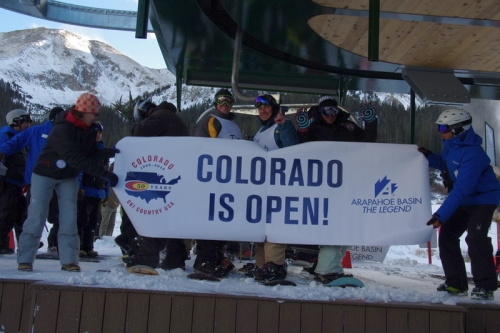
It’s what every ski nut waits for. After the biking. After the hiking. After the fourteeners. After the sailing. These summer activities, while fun, have really only been holding place for the addictive sport of the winter season: skiing.
Wax your skis and polish your goggles, because the Colorado ski season is officially open. Well, at least one ski area is officially open. Yesterday, Arapahoe Basin unleashed its floodgates to the teeming mass of Gore-Tex-clad shredders, carvaholics, and yea, plain ‘ol skiers too.
While conditions were manufactured (there was a good deal of snow-making action occurring at the mountain), it really isn’t a point of how many runs were open, or how gnarly the slopes were. Rather, this signals the commencement of the Colorado season. No more must we putz aimlessly around our houses, pining for the days we can strap slabs to our feet and slide down a mountain.
Check out these photos. And refrain from lamenting that you weren’t there.
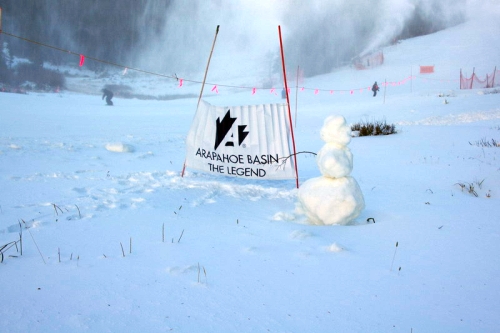
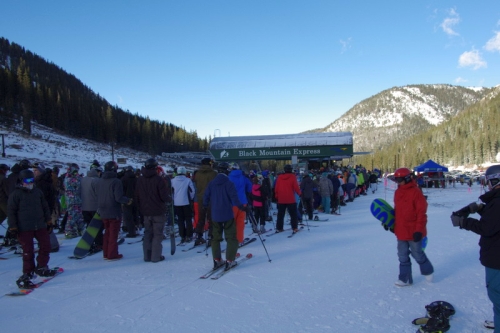
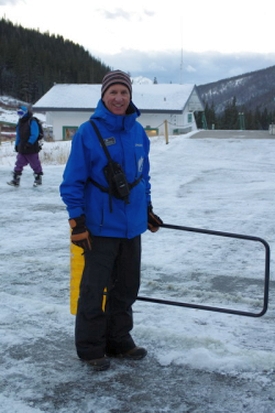
So how will you get to A-Basin this winter? Check out some of these deals on the horizon.
Try buying tickets on A-Basin’s website. “Current lift ticket window pricing will run through December 21, 2012, with adult (19+ years) full-day tickets priced at $64, youth (15-18 years) window tickets priced at $54 and child (6-14 years) window tickets priced at $32,” according to a press release.
Alternatively, try visiting our fave ski site, Liftopia, a website that offers comparatively low prices — especially if you have the foresight to buy them before peak season.
Or, you can kick it dirtbag style and skin up the mountain for free — most resorts are on public land.
Tune back to The Expeditioner in coming weeks for exclusive Colorado ski-scene coverage and to get your fix for winter sports.

About the Author
 Jenna Blumenfeld, (Jenna Ogden Blumenfeld when she’s in really big trouble) hails from the wee state of Connecticut. Although her childhood dream of becoming a bug doctor — with a specialization in ladybugs — has gone unfulfilled, she is content writing about travel, cuisine and culture. A vegetarian, she currently resides in the food hub of Boulder, Colorado. Read more of her food-centric writing at NewHope360.com.
Jenna Blumenfeld, (Jenna Ogden Blumenfeld when she’s in really big trouble) hails from the wee state of Connecticut. Although her childhood dream of becoming a bug doctor — with a specialization in ladybugs — has gone unfulfilled, she is content writing about travel, cuisine and culture. A vegetarian, she currently resides in the food hub of Boulder, Colorado. Read more of her food-centric writing at NewHope360.com.
The post Time To Rejoice, Arapahoe Basin Is Open appeared first on The Expeditioner Travel Site.
]]>The post Antarctica Is Just A Flight Away, What Are You Waiting For? appeared first on The Expeditioner Travel Site.
]]>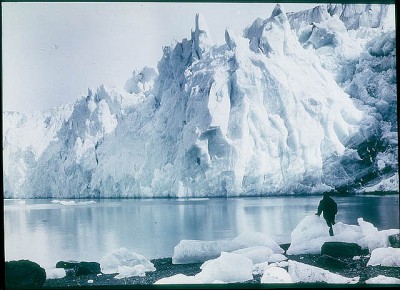
In 1820, Nathaniel Palmer discovered Antarctica when he was merely 22. Palmer was the captain of sealing ship Hero, and when he was in the area seeking more seals to fill the insatiable New England appetite for seal skins, he spotted the Antarctica Peninsula. In addition to imparting all 20-somethings with feelings of inadequacy (what were you doing at age 22?), his discovery served as a springboard for generations of wanderlust souls.
Indeed, the world’s fifth-largest icy continent has attracted the hardiest explorers. In one of the greatest adventure stories of all time, Ernest Shackleton and his crew survived for almost a year and a half on Antarctica, eating seal, penguin and whale meat as sustenance until a small group embarked for South Georgia island for rescue. In 1990 Will Steger’s team of five men and thirty-six huskies traversed 3,600 miles of glacial terrain to become the first humans to cross Antarctica on foot. 2001 saw the first crossing of Antarctica on skis by two women, Ann Bancroft and Liv Arnesen.
More recently, Antarctica has experienced a surge of visitors due to increased access: cruises, climate research trips and educational expeditions have made reaching Antarctica no longer the stuff of dreams, but also reality. One organization, Students on Ice Expeditions, combines traveling to Antarctica with educational sessions.
“Each student expeditioner will undoubtedly return home as an ambassador for the Antarctic, with a new understanding and respect for our planet, and an broadened perspective of the Earth as a global ecosystem,” reads the Students on Ice website.
Indeed, getting to Antarctica isn’t as tough as it used to be, according to a recent article in the The Sydney Morning Herald. Nah, it can be quite a lovely experience — and may only take a day of your time. Antarctica Sightseeing Flights has started to offer flights over Antarctica, departing from Australia. Seeing Antarctica from 3,000 meters sounds like an incredible experience.
“Enormous white fragments are strewn across the surface of the water for hundreds of kilometres,” the article observes. “Directly below, a pack of orcas is breaching foaming surf. I’m not on drugs. I am on a long-range Qantas 747 on a sightseeing tour over Antarctica and my short-range brain is trying to make sense of the unusual circumstances.” Throughout the duration of the flight, a bonafide polar explorer offers educational tidbits over the loudspeaker. Two meals are served.
*
Frankly, it sounds amazing, and I certainly wouldn’t give up the opportunity to experience the 14-hour flight — if it was on someone elses dime, of course.
This flight is one pretty penny. “Prices range across seven classes of travel, starting at $1,199 for an economy center seat (no seat rotation) and rising to $6,999 for ‘ice class,’” according to the piece.
And the pricing options are somewhat peculiar: It seems as if the economy seats don’t have a good view of Antarctica at all. If the whole point of the flight is to sightsee the continent, why would you pony up over $1,000 for subpar views?
Undoubtedly, any person who could see Antarctica first-hand would develop a new appreciation for the planet. The stunning photographs alone are enough to transform even a Fox News pundit into a climate change activist. If more people were able to see this beautiful land, would more people want to protect it? Would there be more stewards of environmental preservation?
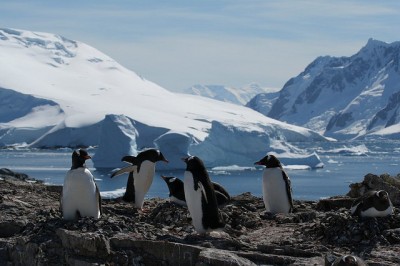
But I have a sneaking suspicion I would feel ripped off if I were to only fly over Antarctica. I would want to walk on it; see the vast expanse and loneliness of the place; feel the wind whip across my face. Were I to venture to Antarctica, I would want to travel by boat through the turbulent Drake Passage; experience the nauseating roll of the waves. Heck, I wouldn’t mind upchucking a few times to seal the deal. Antarctica should be an adventure, not a luxury, and it should be a chore to get there.
Ultimately, Antarctica is remote for a reason, and the kind of people who internalize its specialness are certainly not the ones with the fattest wallets, but the ones with the most steadfast resolve.
[Photos by State Library of South Wales and HamishM]

About the Author
 Jenna Blumenfeld, (Jenna Ogden Blumenfeld when she’s in really big trouble) hails from the wee state of Connecticut. Although her childhood dream of becoming a bug doctor — with a specialization in ladybugs — has gone unfulfilled, she is content writing about travel, cuisine and culture. A vegetarian, she currently resides in the food hub of Boulder, Colorado. Read more of her food-centric writing at NewHope360.com.
Jenna Blumenfeld, (Jenna Ogden Blumenfeld when she’s in really big trouble) hails from the wee state of Connecticut. Although her childhood dream of becoming a bug doctor — with a specialization in ladybugs — has gone unfulfilled, she is content writing about travel, cuisine and culture. A vegetarian, she currently resides in the food hub of Boulder, Colorado. Read more of her food-centric writing at NewHope360.com.
The post Antarctica Is Just A Flight Away, What Are You Waiting For? appeared first on The Expeditioner Travel Site.
]]>The post How Vail’s 10th Restaurant Will Make You Feel Like P. Diddy appeared first on The Expeditioner Travel Site.
]]>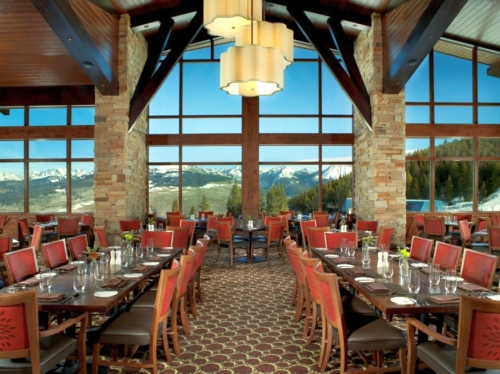
When Americans ski they should be prepared to experience discomfort for at least a portion of the day. While freezing temperatures, high winds and cracked goggles may contribute to this vexation, the largest travesty while skiing is usually in the ski lodge. Let us examine the sub-par cafeteria at a typical ski lodge.
You walk through the swinging double doors and meet an unruly crowd. Throughout the day your boots have slowly squeezed your toes into numb oblivion (the result of your insistence to increasingly tighten your boots for more Lindsey Vonn-like speed and control), so you loosen the buckles, letting them flop to the side as you scope out which packed table you can finagle yourself into. Rogue helmets, gloves and goggles continuously wander their way into your trayful of overpriced, under-seasoned food. Grease from your cheeseburger stains your fleece vest. Your ski-bum buddy grosses you out by mixing his frugal concoction of tomato soup (ketchup and hot water swirled together; stolen saltine crackers dunked into the muddy liquid).
Disgruntled skier, meet the 10th Restaurant at Vail Resort, Colorado — the new ski-in, ski-out restaurant located at mid-Vail mountain. It’s namesake pays homage to the 10th Mountain Division, the 1943-established group of the gnarliest soldiers ever: High-altitude skiing, hiking and climbing were their specialties. In Colorado, the logo of crosshatched skies signifies bravery, living in cahoots with nature and all around badassness. I have the utmost privilege (not to mention bragging rights) of being a descendent of the 10th Mountain Division (my grandfather was a ski instructor at the training grounds in Camp Hale, Colorado).
While the music playing in the ritzy bathroom of the 10th restaurant — “That’s The Way I Like It” by KC and The Sunshine Band — didn’t exactly channel my grandfather’s courageous spirit, the quiet beauty and sophisticated rustic interior of the structure sure did.
 The building’s interior rivals any conventional ski lodge. Wooden rafters garnish the high-vaulted ceiling. A fully stocked, sparkly bar reflects light from a massive, glowing fireplace. Lofty windows offer diners spectacular views of Vail’s storied mountains. The bathrooms are pretty nice too — stocked with mouthwash, hairspray, hairbrushes, lotion and sunscreen. [Editor’s Note: Assuming our female reporter behaved herself, we can postulate that the male latrine is similarly impressive.]
The building’s interior rivals any conventional ski lodge. Wooden rafters garnish the high-vaulted ceiling. A fully stocked, sparkly bar reflects light from a massive, glowing fireplace. Lofty windows offer diners spectacular views of Vail’s storied mountains. The bathrooms are pretty nice too — stocked with mouthwash, hairspray, hairbrushes, lotion and sunscreen. [Editor’s Note: Assuming our female reporter behaved herself, we can postulate that the male latrine is similarly impressive.]
A commendable aspect of the restaurant is the locker room, where tired and cold powderhounds can discharge their wet gear, unbuckle their boots and relax into the cushy comfort of complimentary slippers — real slippers lined with faux fur. In one fell swoop you relax into the Western opulence of the 10th.
It’s time for lunch.
*
Start your meal with the Caramelized Onion, Porcini Mushrooms, Caraway, Brie and Brioche Soup. This steaming bowl has a rich and earthy quality to it that when topped with slices of brie, toast, and fresh herbs, the dark and fragrant broth succeeds in warming up frigid and stiff bones. Pluck a roll from the your tasty bread basket and smear heavily-salted butter onto the bread; dunk into the soup. Eat. Repeat.
 If you’re feeling famished, the Heritage Chicken & Pheasant Pot Pie with Heirloom Root Vegetables & Vermouth Cream is a point of pride for the restaurant. Served in a cast iron skillet, this beauty is topped with a golden crust reminiscent of your grandmama’s heirloom quilt. This meshes with the hot velvety stew laying underneath — like freshly-tuned skis on a powder morning. But eater be warned, this piping hot skillet-full is large enough to feed more than two frozen ski bunnies. Myself and my sister — who happens to work for a ski company (and the answer is yes, I do get free gear) — were stuffed out of commission after just a few bites. This classic dish fills the soul, and perhaps your arteries, to the brim.
If you’re feeling famished, the Heritage Chicken & Pheasant Pot Pie with Heirloom Root Vegetables & Vermouth Cream is a point of pride for the restaurant. Served in a cast iron skillet, this beauty is topped with a golden crust reminiscent of your grandmama’s heirloom quilt. This meshes with the hot velvety stew laying underneath — like freshly-tuned skis on a powder morning. But eater be warned, this piping hot skillet-full is large enough to feed more than two frozen ski bunnies. Myself and my sister — who happens to work for a ski company (and the answer is yes, I do get free gear) — were stuffed out of commission after just a few bites. This classic dish fills the soul, and perhaps your arteries, to the brim.
*
Unless your bank account looks like P. Diddy’s, the 10th Restaurant is not an everyday indulgence. If you are trying to beat the amount of vertical feet you ski in one day, lunch is far too leisurely for that. And despite the notorious prices in cafeterias, the 10th’s bill can add up even more rapidly. But it is a place for special occasions. Where you can take a break from the chaos and crunchiness of the typical ski-day and morph your dirt-bag, bedraggled self into a citizen of true refinement. Just like Mr. Combs himself.
[Photos courtesy of Vail Resorts and the author]

About the Author
 Jenna Blumenfeld, (Jenna Ogden Blumenfeld when she’s in really big trouble) hails from the wee state of Connecticut. Although her childhood dream of becoming a bug doctor — with a specialization in ladybugs — has gone unfulfilled, she is content writing about travel, cuisine and culture. A vegetarian, she currently resides in the food hub of Boulder, Colorado. Read more of her food-centric writing at NewHope360.com.
Jenna Blumenfeld, (Jenna Ogden Blumenfeld when she’s in really big trouble) hails from the wee state of Connecticut. Although her childhood dream of becoming a bug doctor — with a specialization in ladybugs — has gone unfulfilled, she is content writing about travel, cuisine and culture. A vegetarian, she currently resides in the food hub of Boulder, Colorado. Read more of her food-centric writing at NewHope360.com.
The post How Vail’s 10th Restaurant Will Make You Feel Like P. Diddy appeared first on The Expeditioner Travel Site.
]]>The post Where To Find Snow Monsters In Japan appeared first on The Expeditioner Travel Site.
]]>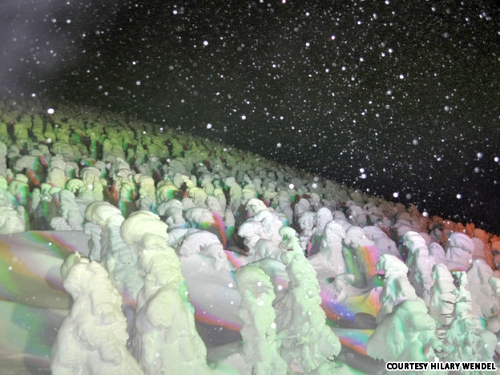
For those of us in that vast portion of North America that has remained snow-free for most of the year, the idea of a snow monster haunting the frigid landscape outside the safe confines of our homes seems a bit abstract. But in Japan, it is a very real prospect, that is if you consider oddly shaped trees to be your kind of nightmare.
CNNGo has this slideshow of the so-called Snow Monsters of Zao in Yamagata Prefecture. In reality, the snow monters aren’t all that scary. They’re just Aomori fir trees “that have been coated with extremely wet snow and ice carried by a cold Siberian jet stream that also freezes them almost solid” into odd human-like shapes. Not exactly the scariest thing you’ll encounter in Japan (that will probably come in the form of the “dancing squid” meals you have later on), but a great sight to see nonetheless. Take that Matterhorn Yeti!
The post Where To Find Snow Monsters In Japan appeared first on The Expeditioner Travel Site.
]]>The post Where To Find Unique Snowboarding Experiences Around The World appeared first on The Expeditioner Travel Site.
]]>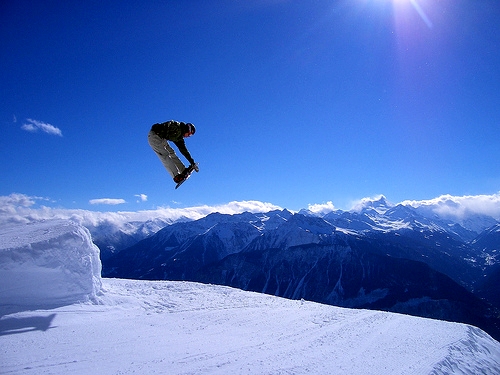
Skiing/snowboarding/snowball fighting season may soon be coming to an end, but there’s still time to make some last-minute preparations to get somewhere that actually has snow (read: not in most of the U.S.). To help out in your planning, Matador put together a dream list of destinations for snowboarders who are looking for something a little more out of the ordinary than the normal mountain trek.
Looking to finally have the chance to snowboard down the length of a mountain and end up on the shores of a beach? They suggest heading to Greenland where you can finally fulfill that dream, albeit without getting to actually enjoy much of the beach since it’s a frozen tundra of packed dirt and ice (much better than a warm ski lodge, right?).
Or if you are an avid winter sports fan but you foolishly took that job at a large, multi-national oil firm in the U.A.E. back when you graduated college (at least they were hiring!), check out Dubai’s Ski Dubai, a fully-contained indoor ski resort that boasts snow production of 30 metric tons a day. This is probably both a dream and nightmare for the snowboard enthusiast.
Of course, if actual snow is what you’re looking for, be not afraid, Colorado finally got that late-winter blizzard the state’s known for, and the resorts are now literally buried in snow. The Denver Post’s Ski Report is reporting that Vail has a depth of 37″, Copper is at 50″, Breckenridge has 51″, and in the lead is Wolf Creek where they’re reporting 80″. All hope is not lost!
[Dream snowboard trips for 2012/Matador]
The post Where To Find Unique Snowboarding Experiences Around The World appeared first on The Expeditioner Travel Site.
]]>The post Where To Ski This Winter (Now That It Has Arrived) appeared first on The Expeditioner Travel Site.
]]>
Now that La Nina has finally reared her head onto America’s northern Rocky Mountains, I’ve been rejuvenated to wax my skis in anticipation of escaping all those mind-numbing groomer runs and finding some powder. Really, La Nina? WTF? With a recent system blanketing western Montana — we’re talking like one of those uber-beefy, 14-inch thick, quilt-like blankets (if you know what I mean) — I grabbed my fat skis and headed to Big Sky Resort.
It was purely a research trip to follow a lead that has been sitting in my e-mail for a few weeks now (Matt, I had a reason for waiting, I promise). It had nothing to do with the recent dump, nor anything to do with Outside Magazine naming Big Sky as having the season’s best new glades in the country. It was all research. All of it.
I was sure researching as I rode up the Ramcharger lift to see what these new runs were all about. Andesite Mountain is the overlooked stepchild in the shadow Lone Peak — the striking, pyramidal summit and gnarly terrain Big Sky is known for. It’s time for Andesite to step out of the shadow, because it now has some of the best tree skiing on the property. Booking runs through delicate powder and beautifully-spaced trees on Wolf Den and Coulter’s Hell changed my attitude from, WTF, La Nina!?, into a Cheers to you, La Nina!
But keep in mind, it was all done in the name of research. My conclusion? I had a sneaking skepticism toward the Outside article — it just sounded too much like a paid advertisement for the resorts included in the piece. Though, now that I’ve experienced the new steep ‘n deep tree runs at Big Sky, I can confidently say there’s truth to the Best New Glades honor.
This also peaked my interest to dive a little further into their list. It includes all the usual suspects, though some of the insights may have you looking at your favorite resort a little bit differently. For the East Coasters, Sugarloaf in Maine was named as having the best new trails, while Vermont was cited for having some of the best deals (specifically, Mad River Glen and Sugarbush). More importantly, check out Taos, New Mexico, for the best spring skiing — which typically involves a spring party — or you could simply head to Vail, Colorado, to experience their honor of having The Biggest Party.
All I ask is that you party in the name of research.
[Big Sky Lift by Jon Wick]
[The 25 Best Ski Resorts of 2012/Outside Magazine]
By Jon Wick

About the Author
 Jon lives in Butte, Montana, spending most of his time on skis or bikes; sometimes both. He began travel writing while teaching in Korea and is currently pursuing his Master’s Degree in Technical Communication at Montana Tech. Jon has begun writing his first book, The Story of Will, whose movie rights are still (very) available. Catch more of Jon at TheJonWickproject.wordpress.com. (@ExpedJon)
Jon lives in Butte, Montana, spending most of his time on skis or bikes; sometimes both. He began travel writing while teaching in Korea and is currently pursuing his Master’s Degree in Technical Communication at Montana Tech. Jon has begun writing his first book, The Story of Will, whose movie rights are still (very) available. Catch more of Jon at TheJonWickproject.wordpress.com. (@ExpedJon)
The post Where To Ski This Winter (Now That It Has Arrived) appeared first on The Expeditioner Travel Site.
]]>The post How Many People Visit The North Pole Every Year? appeared first on The Expeditioner Travel Site.
]]>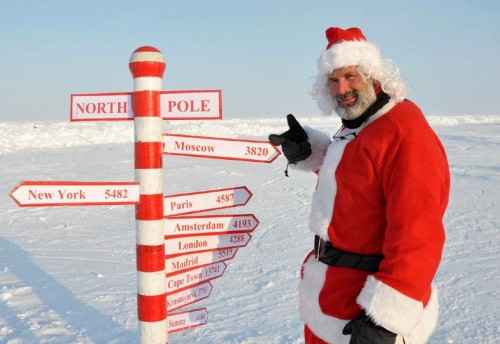
So you’re one of those adventure, off-the-beaten-path travelers that revels in the fact that you don’t bother with those touristy destinations around the world; that you knew about Laos, Colombia and Jordan long before everyone else did; and that there’s no place in the world you wouldn’t at least consider visiting.
So how about the North Pole? What’s that you say, you aren’t one of the few people that have trekked to the land of perpetual ice and snow to go where so few humans on Earth will ever visit?
Turns out you’re not exactly in the minority. In fact, the North Pole only gets about 1,000 visitors a year, as Annie Aggens, director of Northwest Passage Polar Explorers, recently told the Montreal Gazette. Though the North’s Pole evil twin, Antarctica, remains relatively accessible and well-visited — attracting close to 20,000 visitors last year — the North Pole has far more barriers to entry.
Namely, given the extreme temperatures, access is limited to just a few months out of the year (roughly the Northern Hemisphere summer). Further, if you plan on making the trip, get ready to shell out $20,000 minimum just to get there by plane, another $10,000 or so if you plan on skiing or dogsledding there. (No fancy Antarctic cruises or research stations here.)
Although, what’s even more discouraging is the fact that the North Pole has no fixed physical location. Given that its true location is basically located on a hodgepodge of floating chunks of ice, its actual location isn’t marked by any permanent marker like a monument or a Starbucks.
In other words, you basically walk along a white, frozen landscape until you abruptly stop as your guide announces that according to their GPS, you’ve made it. You look around, not able tell that it looks any different from what you’ve been looking at the past few days or so, and you take solace in knowing that one more box has been checked off in that virtual bucket list in your head. Then you turn around and head back, one more feather in your travel cap.
By Matt Stabile

ABOUT THE AUTHOR
 Matt Stabile is the Founder and Editor-in-Chief of The Expeditioner. The Expeditioner began in 2008 and is headquartered in New York City. You can read his writings, watch his travel videos or contact him at any time at TheExpeditioner.com. (@TheExpeditioner)
Matt Stabile is the Founder and Editor-in-Chief of The Expeditioner. The Expeditioner began in 2008 and is headquartered in New York City. You can read his writings, watch his travel videos or contact him at any time at TheExpeditioner.com. (@TheExpeditioner)
The post How Many People Visit The North Pole Every Year? appeared first on The Expeditioner Travel Site.
]]>The post Check Out Our Favorite Site For Discount Lift Tickets appeared first on The Expeditioner Travel Site.
]]>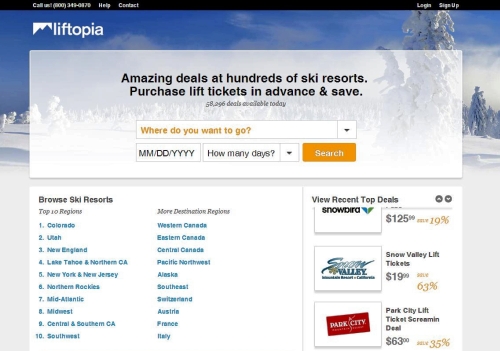
Despite the fact that here in the U.S. we’ve been experiencing what some are calling a “Winterless Wonderland” due to the record-setting lack of snow in parts of the country, we are still entering the high season for winter sports. And for those of you within driving distance of slopes where you don’t have the fear of plowing into exposed patches of dead grass while heading downhill, we once again recommend checking out our favorite tool for finding discount lift ticket deals on the web, Liftopia.com.
Every year these guys keep upgrading the site’s look and feel, and searching either by region, date or clickable map makes finding deals intuitive and fun. It’s also worth checking in on the site periodically for the daily deals that are highlighted on their front page, with deals as high as 81% off certain destinations.
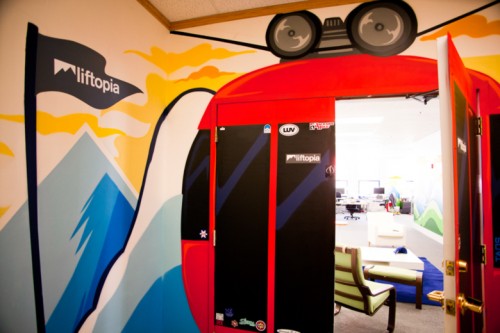
Also, for all of you stuck in cubicle-laden non-tech-start-up boring office spaces, take heart in Liftopia’s awesome digs where offices are decorated to look like you’re entering a gondola (see above). This is way more fun than TheExpeditioner.com’s offices where our offices are just areas of a large room where we’ve taped to the wall notebook paper with the word “office” written on it. Venture capital funding always welcome.
The post Check Out Our Favorite Site For Discount Lift Tickets appeared first on The Expeditioner Travel Site.
]]>The post Heli-Skiing Dreams: Nevada’s Ruby Mountains appeared first on The Expeditioner Travel Site.
]]>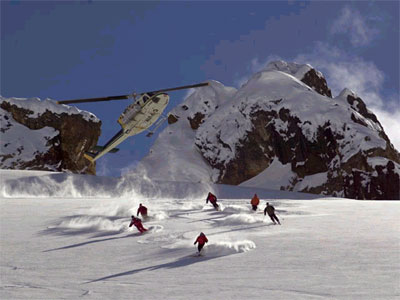
Raise your hand if you’re psyched about goggle-tan season. It’s getting to that time of year when the dedicated few attempt to ward off summer as long as possible by slaloming through legions of flailing springbreakers on our way to fresh corn-snow. That’s typically my M.O. once the calendar turns March. That is, of course, since I’m not currently in the Ruby Mountains of northeast Nevada, with a helicopter at my beckon call. That would be far too dreamy.
I’ve never been heliskiing . . . yet. Rumor has it, our first Expeditioner staff retreat will involve 11,000 foot peaks, an open bar, choppers with room for everyone, and untouched powder as far as you can see. Matt, seriously, check out the The Wall Street Journal’s article about the Ruby Mountains Heli-Experience and you will be as sold as I am on a trip.
Possibly the best-kept secret in the world of heli-skiing, Joe Royer started the guide service in 1971 in the middle of a few cowboys and some local gold miners. It was one of the first heli-skiing operations in the country.
If you think heli-stress might get the best of you — talks of avalanche transceivers, ridges, cliffs, and chopper blades — Mr. Royer has just the warning, “When it’s all said and done, we’re gonna ruin you. You’ll never want to wait in a lift line again.” Those are the words of experience talking —personal experience. The problem about wisdom is this: it’s usually correct.
And what are the first few moments like after jumping out of the copter like some sort of Navy Seal landing in enemy territory? Fear, of course.
The retreating rotor blades create a weather system of their own for a few violent seconds, and then it is resoundingly quiet. I feel my heart racing. Is it the altitude? The beauty? The terror? With only one way down, I push off.
After just a few timid turns I’m in a thin grove of Aspen. I panic: Where’s the trail? The trees call on my attention. I drop into a more aggressive posture and weave through them. A wide valley of virgin snow suddenly opens below me, and before I finish my first run, I am laughing like an idiot.
The realization that there are no lines, no set trails, no cramped gondolas imposing limitations elicits a rush of adrenaline. When the feeling of freedom settles, it yields to a sense of wonder, and then peace…
I’ve had days on the mountain when I stop, look up the hill, and for a short time I’m the only soul on the run. There are even a few sparse weekdays when I can virtually ski right onto the lift.
And there are those choice days when the magic of powder skiing hits your chest with every turn. Individually, I consider each of those some of the best days on the mountain. Having all three, at the same time, would no doubt send me into an episode of idiotic ecstasy.
I need to stay away from articles like this — either for the time being or until the accounting department OK’s that staff trip. Piecing moments of this kind of magic together, in an article, is more than enough to ruin me. And I’m not quite ready for that yet . . . I don’t think.
By Jon Wick

About the Author
 Jon lives in Butte, Montana, spending most of his time on skis or bikes; sometimes both. He began travel writing while teaching in Korea and is currently pursuing his Master’s Degree in Technical Communication at Montana Tech. Jon has begun writing his first book, The Story of Will, whose movie rights are still (very) available. Catch more of Jon at TheJonWickproject.wordpress.com. (@ExpedJon)
Jon lives in Butte, Montana, spending most of his time on skis or bikes; sometimes both. He began travel writing while teaching in Korea and is currently pursuing his Master’s Degree in Technical Communication at Montana Tech. Jon has begun writing his first book, The Story of Will, whose movie rights are still (very) available. Catch more of Jon at TheJonWickproject.wordpress.com. (@ExpedJon)
The post Heli-Skiing Dreams: Nevada’s Ruby Mountains appeared first on The Expeditioner Travel Site.
]]>The post Three Tips To Getting Your Ski Deals This Season appeared first on The Expeditioner Travel Site.
]]>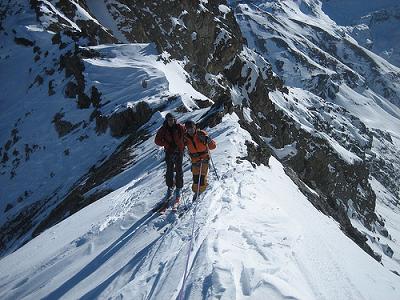
Thanks to our good friend Ullr, most of us in North America have already begun the winter rituals of incessant Weather Channel watching and the consequent reveling in the spoils of the most recent snowstorms. Lucky us, since this year surpasses any in recent memory as far as early season snow goes. All this is great news for skiers and snowboarders, but even better are the deals to be had this season. Admit it, saving some green on your lift ticket will put a few more Pabst Blue Ribbons in front of you at the slope-side bar. We can all dig that.
Last year was such a good year, as The New York Times pointed out in a recent article, that the 2009-2010 winter season turned out to be the second-best ever for resorts, with nearly 60 million visitors. That’s also with dirty little El Nino driving our snows away and the economy thinning our wallets. All those visitors were a result of some aggressive deals offered. That’s why we wanted to share with you where the you can get wrangle up the best deals floating around in cyberspace to make 2010-2011 even bigger.
1) Your first stop should be Ski.com where they have more deals than ever before — free nights, free lift tickets, and free upgrades. Still looking for something to do on New Year’s? A search at Ski.com revealed nearly one hundred deals still available.
2) If you can’t hack the world wide inter-web — in which case I thank you for visiting our site — I recommend you check out Virtuoso travel agents. They can help you bundle deals together — lodging deal plus ski deal in one — or give you the goods on how to get 10 free airplane tickets if you are, say, heading to Crested Butte with 26 of your friends.
3) Finally, if your two-year-old is throwing bigger tricks than you are in the terrain park, I might suggest checking around for family vacation deals. Keep an eye out for “kids stay/ski free” deals — they’re hot right now. Most of those deals are for kids under 12, but if you head out to Mt. Bachelor in Oregon, junior can be 18 and still qualify. That way he can jib his little heart out without paying a dime.
That’s important, because you need all the dimes you can get when you’re paying for my PBR’s.
The post Three Tips To Getting Your Ski Deals This Season appeared first on The Expeditioner Travel Site.
]]>The post Traveling To Ski Or Skiing to Travel? Answer: Yes! appeared first on The Expeditioner Travel Site.
]]>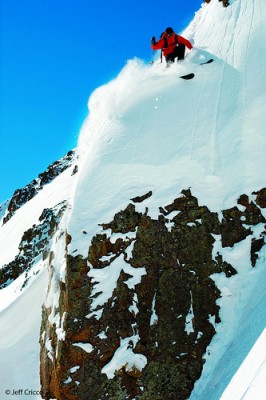
While Matt was hobnobbing with famous actors-cum-travel writers (or vice versa), I spent my night sitting in a dark corner of a small theater. The audience’s energy was electric and the whoops erupted throughout the night. Those hollers were unleashed for the sensory assault brought on by the premier of Warren Miller’s most recent epic ski flick, “Wintervention.”
Capitalizing on anticipation brought on by the first few inches of snow resting on the Bozeman streets, the timing couldn’t have been any better to get everyone jazzed up about the possibilities awaiting everyone in the Northern Hemisphere this time of year. Personally, it’s a great time of year to break an arm (long story . . . I’ll spare you), because for the most part, it’s a transitional time between the bike and ski season.
Or what was brought to my attention last night at the movie, this time of year is more of a transition from bike travel season to ski travel season. Lately, I’ve been looking at maps not for areas to travel to with my bike, but those mountain ranges I have not yet visited with my skis. Oh, the possibilities . . .
The legendary crew at Warren Miller has assembled yet another, their 61st, film that officially jump-starts the winter sports season. Olympic champion Jonny Mosely poses as a Fraiser-esque radio psychologist dolling out advice to troubled snow junkies. They soon heed the DJ’s words in a barrage of big-mountain tracks, bass-thumping powder shots, and heli-ski adventures all over the globe.
That was what caught my attention — all over the globe. Skiing, I use this term in the broadest sense to include snowboarding and racing, has evolved from a travel-to-ski genre towards a ski-to-travel industry. The film takes place investigating skiing’s origins in Austria, heads into the Arctic North around Spitsbergen, Norway and Alaska, discovers the craziness of New Zealand, the strength of the Caucasus Mountains in the country of Georgia, even skiing lines in Antarctica that have yet to see footprints. This is the epitome of skiing as travel being glorified in one of the most influential mediums of our time.
For most of us, myself included, our lifestyles don’t mirror that of the professionals Warren has on staff (Lindsay Vonn, Chris Davenport, Andy Mahre, and Jossi Wells make appearances), nor will it anytime soon. So our ski trips will continue to be to our favorite runs on our favorite hills. We travel the roads so that we can enjoy our chosen winter recreation, rather than allowing our recreation as a compass leading us to different cultures, people, and landscapes. Either of those options I’d gladly take this afternoon.
That’s not to say that when you have a few sick days to use before the new year, the thought of jumping on a plane to the nearest ski hill in Japan or Russia won’t cross your mind. As it should . . . but that could just be the Warren Miller in me talking.
[Photo by WarrenMillerEnt/Flickr]
The post Traveling To Ski Or Skiing to Travel? Answer: Yes! appeared first on The Expeditioner Travel Site.
]]>The post 2010 Olympic Trip Conclusions: 12 Things Everyone Should Know appeared first on The Expeditioner Travel Site.
]]>
I left Whistler on another gorgeous, bright winter morning. Unfortunately, obligations exist. So I headed down to Vancouver in hopes of filling my mom’s order for several pairs of those cheesy mittens and curling tickets. I spun through a mall but, alas, no mittens.
I spun through the Vancouver Olympic Center’s box office and, realizing I was in Canada still, no tickets (who doesn’t want to experience the world of curling first hand?). I decided, tail between my legs, to get started on my drive home. It must have been somewhere in the midst of Eastern Washington’s barren fields of nothingness that I thought to share some of the knowledge I gained in my ten days in Vancouver and Whistler.
1. Any and every event, regardless of how lame or amazing you may think it is, will blow any of your preconceived notions out of the water.
2. Give any German flag-bearing fan a wide berth. I took a shot upside the head, then had a great chat about Oktoberfest. I guess that’s not so bad, eh?
3. Best Whistler restaurant — Prime Tapas at the base of the Creekside Gondola. If you have a chance, order the mussels (from Vancouver Island) or the fresh Tuna. If you’re trying to . . . you know, I suggest the oysters.
4. Lindsey Vonn is gorgeous (yes, believe the hype).
5. Vancouver’s diverse neighborhoods should be a destination themselves: Granville Island’s maritime and market vibe, chic Yale Town, historic Gas Town, the most authentic and largest Chinatown in North America; with the influx of green space and parks, I can see why the city is a popular destination.
6. I can’t help but give a shout out to Bryon Wilson, the bronze medalist in the men’s freestyle moguls, and a fellow resident of Butte, Montana. That was an extra special moment for me.
7. Whistler Resort and Village claims to be the best on the continent. I haven’t seen another place that could dispute that statement either. In fact, not many places force me to founder away in the deep powder, but Whistler’s peak did just that.
8. Random Olympic sport thoughts:
• Snowboarding: What other Olympic sport lets you listen to your iPod as you compete while your pants hang below your butt? Is that part of its draw?
•Ice Dancing: Trying to make skating as cool as you can, without doing any of the cool things.
•Luge: Are you people insane?
•Skeleton: You people are insane.
•Curling: A beer drinking game turned Olympic sport. What’s the point, and why can’t I help watching hours of it?
9. Olympic travel isn’t as bad as people thought ahead of time. Buses are numerous and frequent, avoiding the Sea to Sky Highway driving checkpoint is easy with some planning (open 6 a.m. to 6 p .m.), and a pass is easily obtainable in Squamish.
10. There is so much going on, all the time, you should pick and choose what to do. The daily Olympic events are a must, then grab a bite at one of the outstanding restaurants, then take in some of the festivities: public celebration sites in Vancouver, free afternoon and evening concerts in Whistler, Fire & Ice at skier’s plaza in Whistler Village, or simply just wander around — any of these are completely worth it. Keep in mind, I didn’t have any time to museum- or tourist-site hop around either.
11. Big props to my friend Louis, his family, and his roommates for putting me up for the trip. I successfully did ten days of the Olympics on an uber-mini budget of around only $1,200. It helps those mittens were all sold out.

12. The Olympic spirit is something everyone should experience. When you have so many people, with so many different views, supporting so many things, tension is bound to arise. I never felt any thing like that. People from all countries were supporting everyone, although still hoping for their favorites to win.
There was a peaceful coexistence of all athletes, and people from all over the world. Even I was a monster Norway fan at the cross country race, an American fan at the skiing, and a Canadian fan every other time. I’m not sure if there is a sense of competition of the athletes against the elements — mountains, ice, or clock — or if there is just a sense of being involved in something larger than your personal ideologies. Whatever the reason, it’s special, and I will never forget it.
The post 2010 Olympic Trip Conclusions: 12 Things Everyone Should Know appeared first on The Expeditioner Travel Site.
]]>The post 2010 Olympics Day 8: Cross Country Skiing And Barenaked Ladies (Not That Kind) appeared first on The Expeditioner Travel Site.
]]>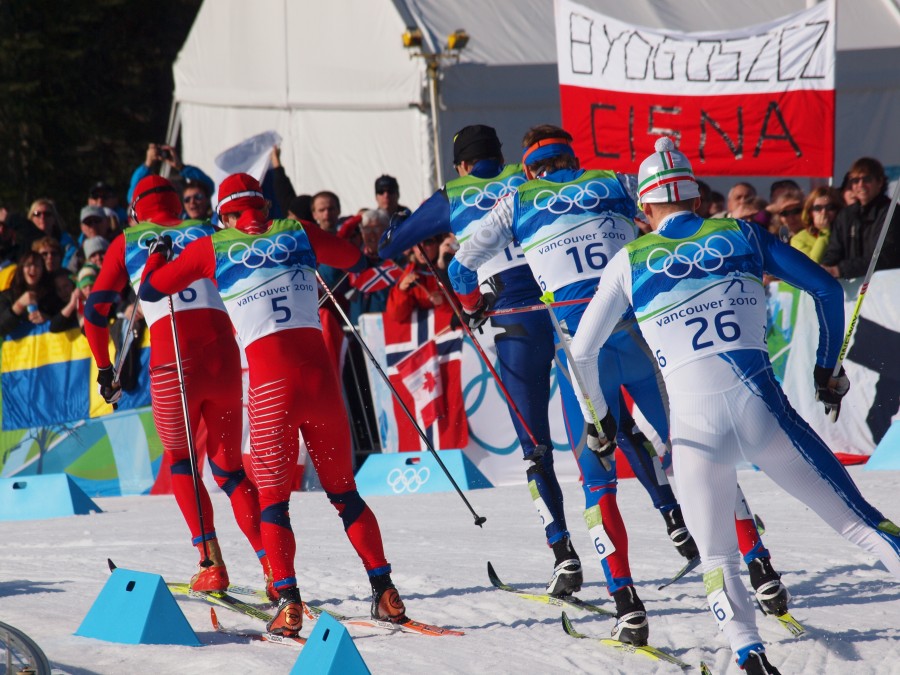
I survived the hangover of 2010, and got up early this morning so I could catch a bus to Whistler Olympic Park, about 9 km down the Sea-To-Sky Highway from Whistler Village. I had a ticket to the Classic Style Cross Country Sprint races. Since I’m cross country skiing illiterate, I really had no idea what to expect. I’ve learned at the other Olympic events I’ve been to that in person they are far more impressive than the finely edited broadcasts you see on television, but cross country skiing? Really? Yup.
After an unwarranted ticket scalping interrogation by the RCMP (a mounty that went without his morning Timmy Horton’s, apparently) at the gate of the venue, I grabbed a fence position as the sun rose over the racers already on course.
I figured I’d see a start, then wait for 20 minutes, then see a finish and the rest of the racers trickle in. Shows you how little I know. Rapid fire, the skiers came shooting passed me and my Norwegian-speaking neighbors. The fans roared to life, their coaches sprinted along the snow and barked orders as far as they could keep up. As quick as I began doing nothing when I entered the stadium, just as quickly the mayhem broke out.
This kind of race — and correct me if I’m wrong — begins with every competitor starting at intervals in a time trial situation. So if you can imagine, craziness follows each skier as they go around the track. For me, relatively unaffiliated as who to cheer for, noticed there was a kind of wild wave of energy that coursed through the venue for both the men’s and women’s races.
When the time trials were done, then came the dull. Over an hour and a half of nothing; meticulously anal course grooming, hand raking, leveling, and raking again. Not the spectator sport it should be. Maybe this is where my cross country skiing stereotypes come from.
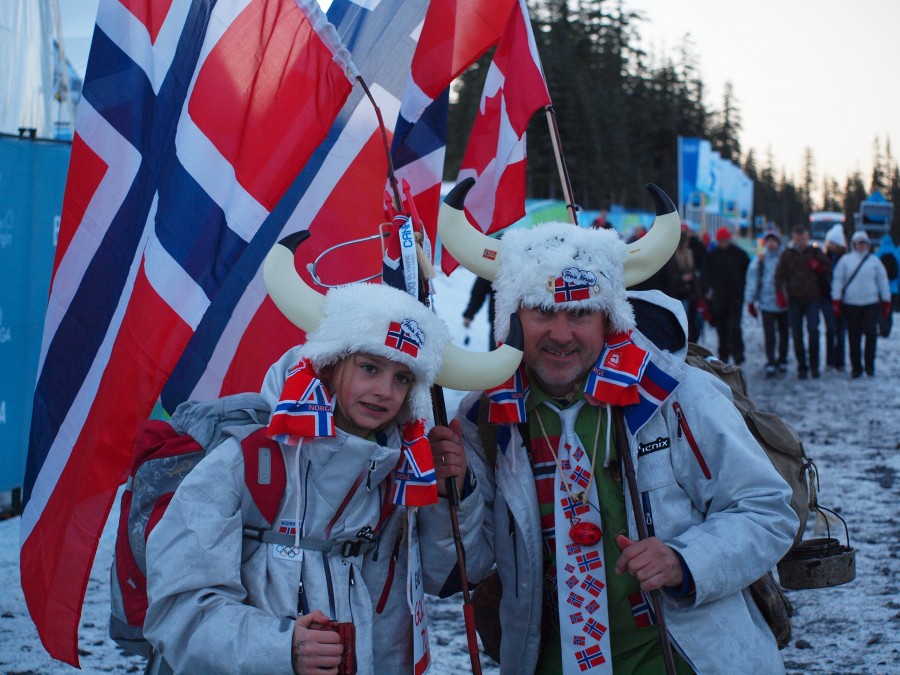
But — and there always seems to be a “but” on this trip — back comes the mayhem, throwing everything I had ever thought about this sport on its head. For the rest of the afternoon, the races kept coming without breaks, men’s quarterfinals then women’s, men’s semifinals then women’s, finally both championship races. The racers left their heart and souls on the snow, they were pushing themselves to literal exhaustion (and getting carried off), and the numerous photo finishes made me a Norway fan for the day (nothing like jumping on the bandwagon). All I need is a funny-horned helmet thingy (see above). I cheered my adopted team on to a bronze medal, behind two Russians, and walked out of the venue, stunned at the athleticism of the athletes, humbled by my ignorance of the sport, and psyched to go see the Barenaked Ladies.
Come on . . . get your head out of the gutter. The entertainment surrounding the Olympics is a draw itself. The Whistler Live! concert series taking place every night throughout the Olympics in the village square, made a real effort to attract Canadian artists to perform at “their” Olympics. The Barenaked Ladies were tonight’s headliner, playing a completely free show. Besides being well known (and sending me back to my high school days), they are a talented band, very Canadian, and the maple leaf pride resulted in an outstanding show.

The night was capped by my peeping through the fence at the Whistler Medals Plaza to see my girls, Lindsey Vonn and Julia Mancuso, receive their gold and silver medals for Ladies Downhill Skiing. I’ll see you, Lindsey, tomorrow at the Super Combined before I go experience everything that Skeleton actually is.
Peeping, Barenaked ladies, and sweaty European athletes — just another day at the Olympics for this TheExpeditioner.com reporter.
The post 2010 Olympics Day 8: Cross Country Skiing And Barenaked Ladies (Not That Kind) appeared first on The Expeditioner Travel Site.
]]>